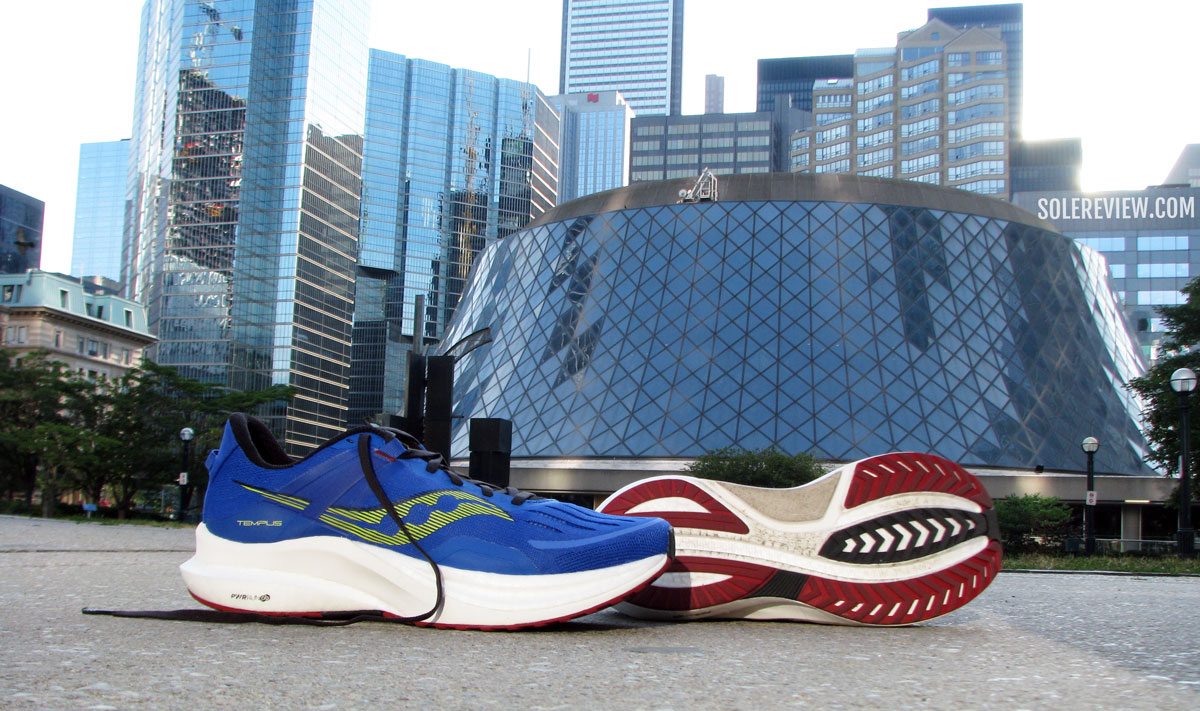
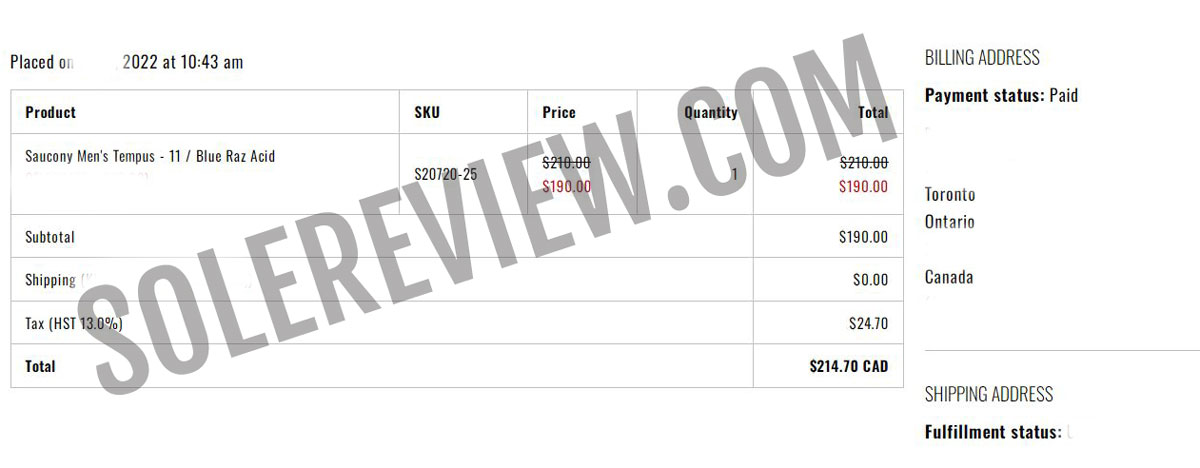
The Saucony Tempus was purchased at full retail price for our review. The amount is in Canadian Dollars.
In this review:
INTRODUCTION
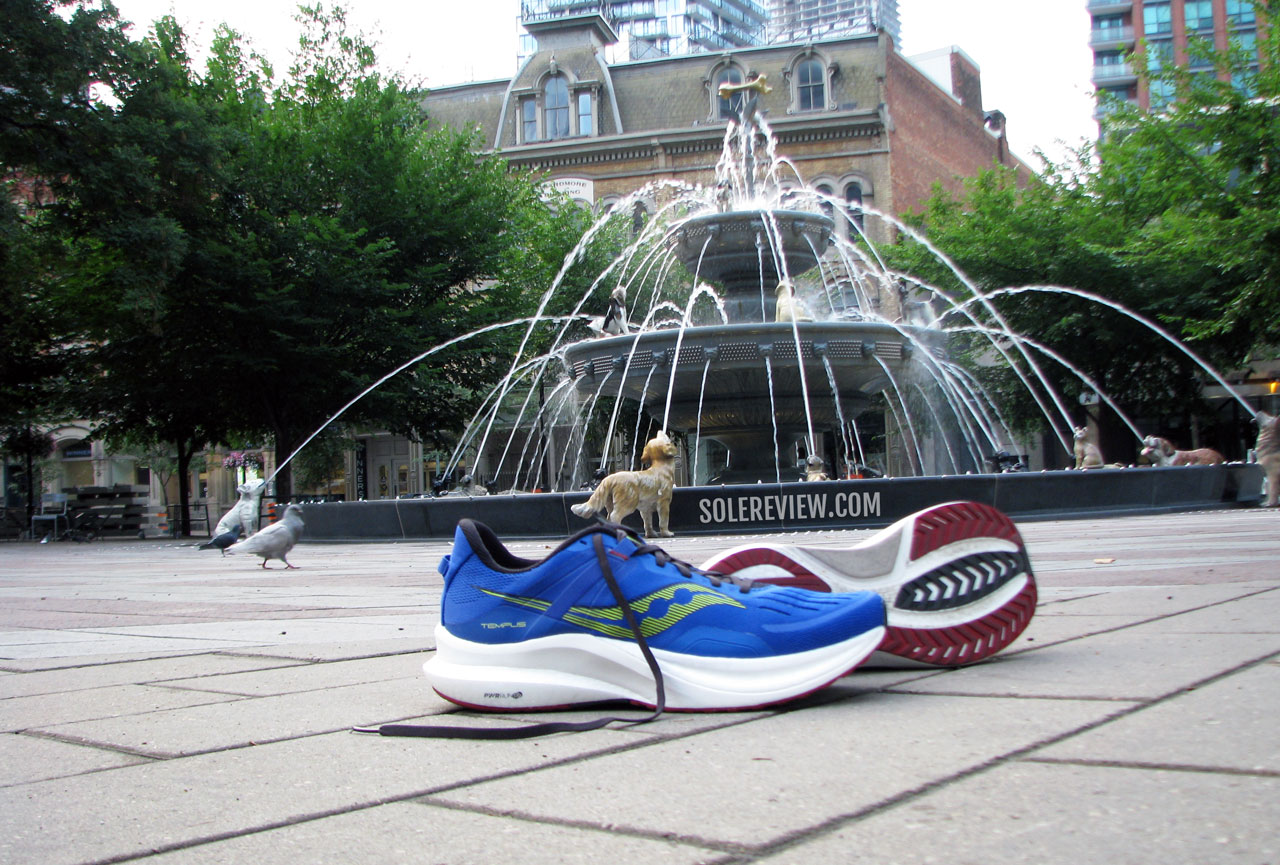
The Saucony Tempus is a stability trainer that replaces the Hurricane 23 – a cushioned running shoe with a supportive inner midsole.
But the two shoes couldn’t be more different, as the Tempus is unlike anything that Saucony has in its current line-up, and the brand even claims that the Tempus is the first of its kind.
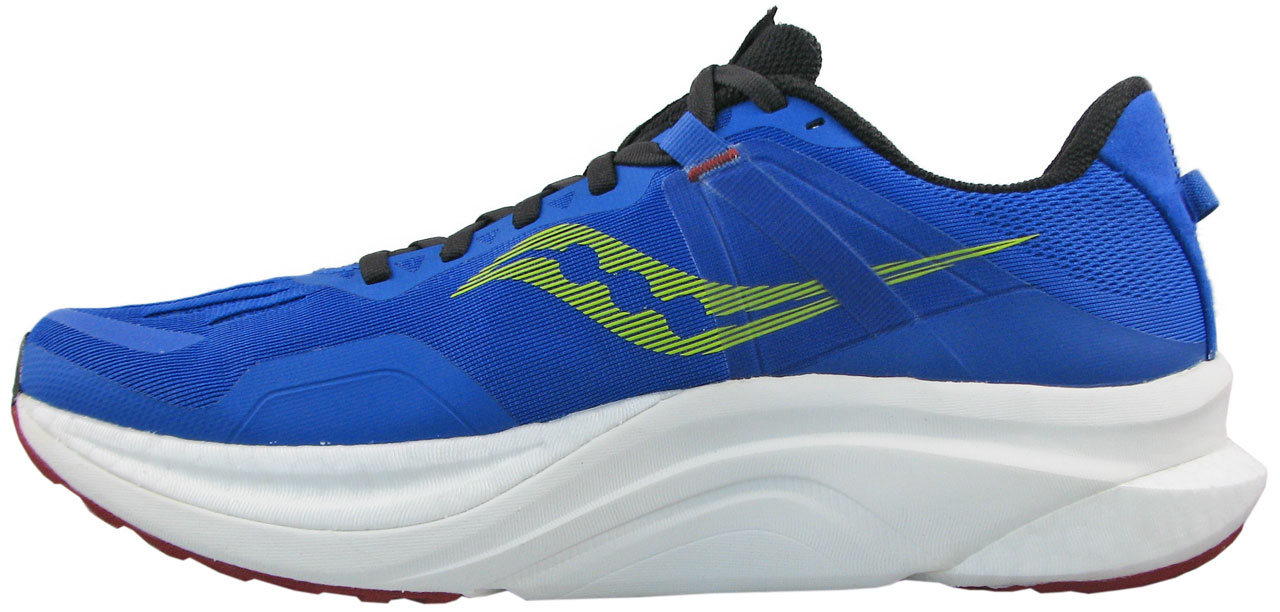
The Tempus is a unique stability trainer, but it’s certainly not the first of its kind.
But is it?
Though nothing like the Tempus exists at the moment, its claim of being original is very debatable.
Over the years, Saucony has become exceedingly good at turning an existing running shoe concept into a different, and at times better, version of what already exists.
For example, the connection between the Saucony Everun (now Pwrrun+) and adidas Boost is very obvious. Also, the Pwrrun PB is a PEBA-based foam, and we all know where that came from.
And of course, you have the plate-in-PEBA midsole Endorphin Speed and Pro that are based on the Nike Vaporfly.
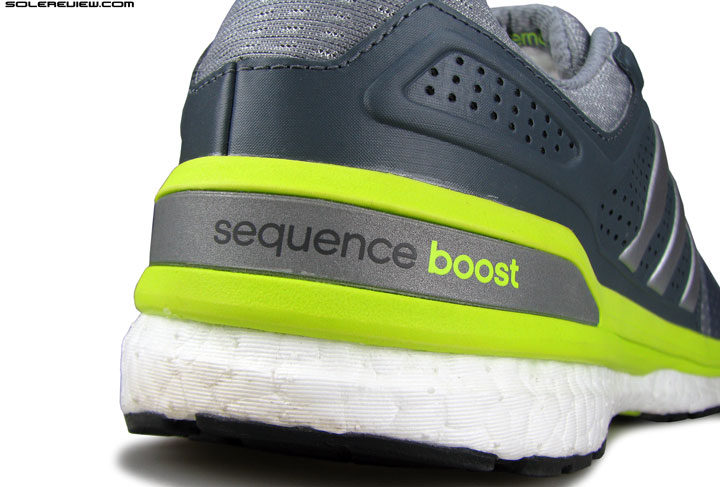
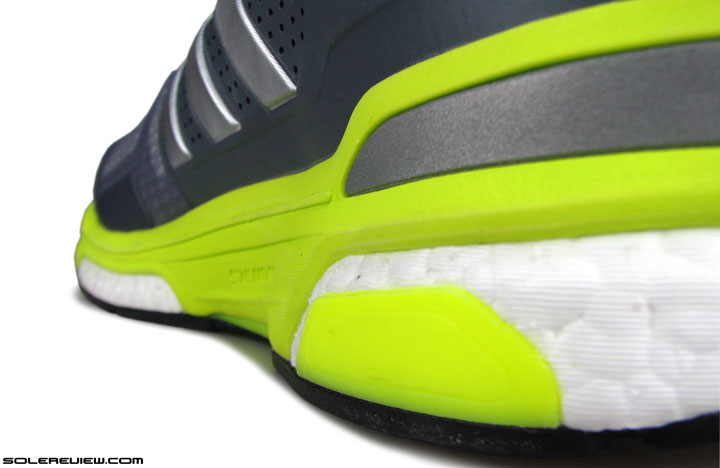
The ‘Stableframe’ midsole of the 2014 adidas Sequence was the first to use a ‘drop down’ EVA frame on a stability running shoe. Now we know why the Tempus looks so familiar.
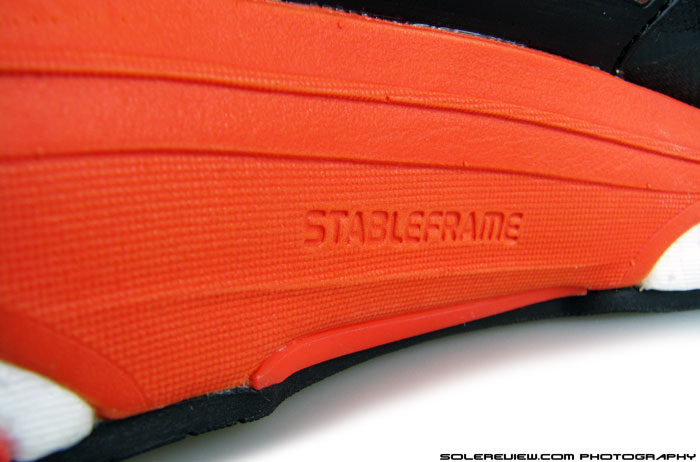
The adidas Sequence was innovative for its time, as it substituted a medial post with an EVA frame.
Many years ago, when the world was quite young, adidas sold a stability shoe called the Sequence Boost. Just like Tempus, it combined two unique components for its time – the then-new Boost foam, and an EVA frame with a supportive medial drop-down.
We had a high opinion of the Sequence Boost when we reviewed it nearly eight years ago, as it dared to challenge the status quo (medial posts) while delivering the promised ride stability.
The Boost foam midsole also made the Sequence more comfortable than most stability trainers in 2014. That cushioned ride was made whole by a large EVA frame that delivered wholistic stability, as opposed to the localized approach of medially-posted midsoles.
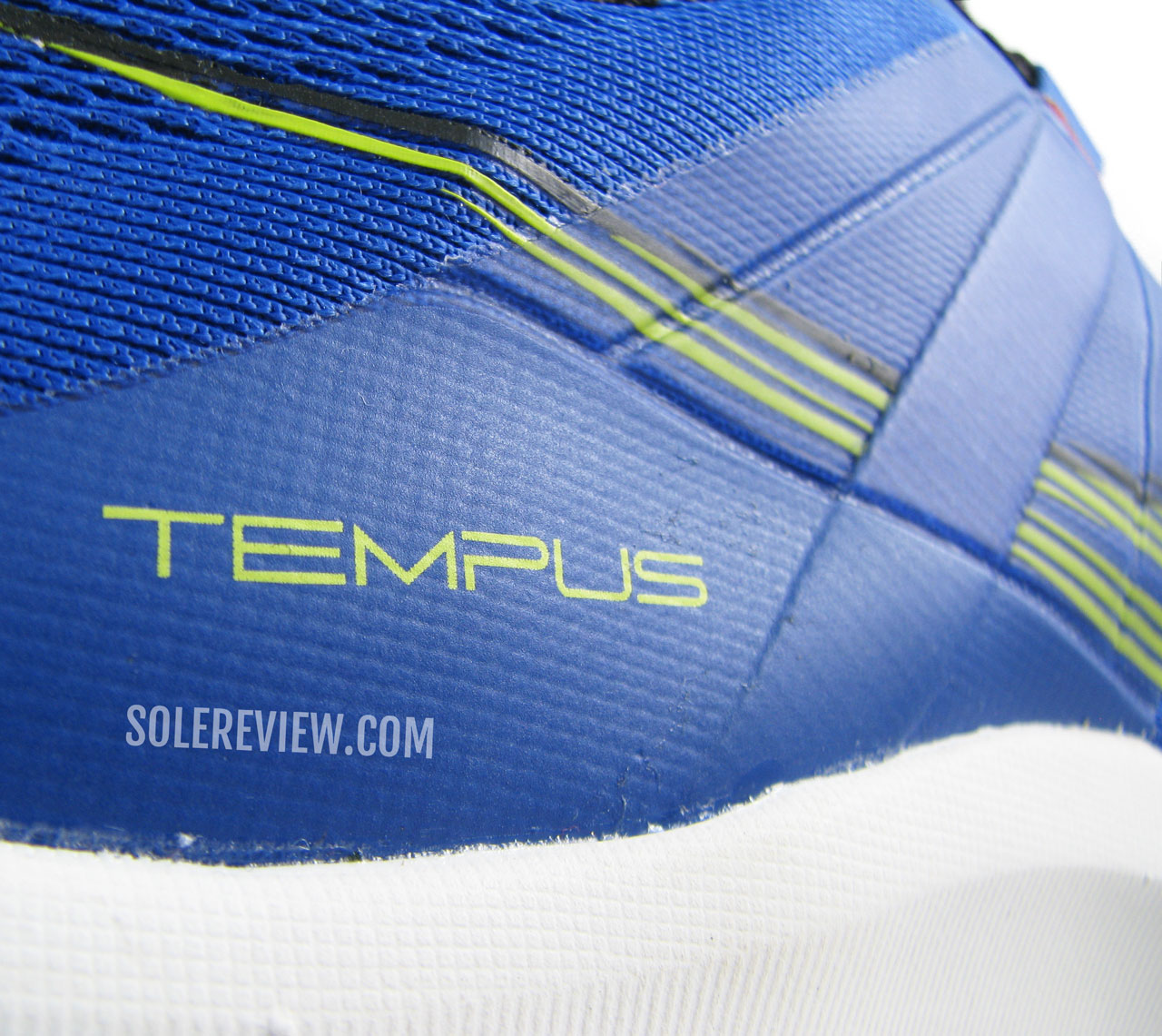
Sorry Tempus, you aren’t the first.
Another adidas shoe called the adizero Tempo existed alongside the Sequence, and it was the speed version of the Sequence. On a related note, the word Tempus (Latin for time) is similar to Tempo (pace).
adidas abandoned the Sequence after a few years, and it even had a cheaper version called the Vengeful. When we reviewed the shoe, we found it to be terrible.
Though not related to the Tempus, other brands like Skechers and New Balance tried something new within this space. The Skechers GoRun Forza and New Balance Vongo (V1 – V4) are noteworthy examples.
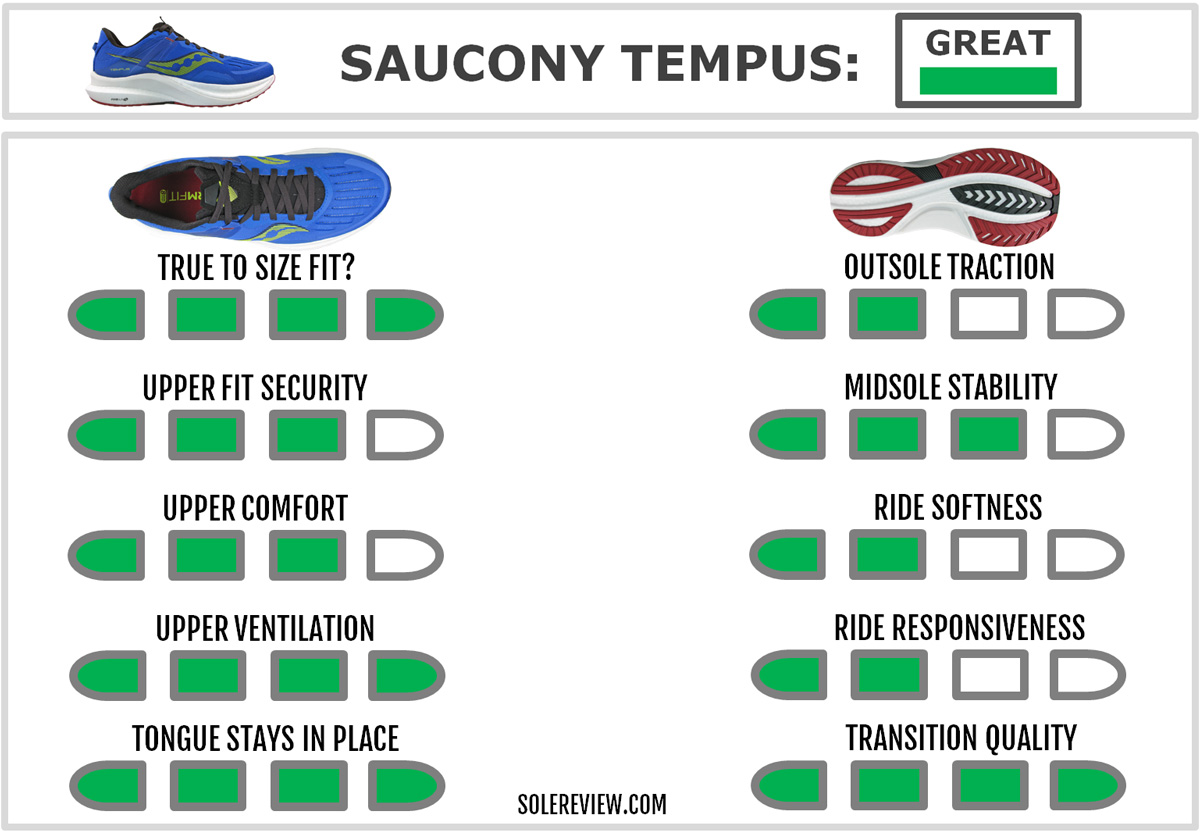
You don’t need to be a shoe reviewer to tell that the adidas Sequence Boost and Saucony Tempus share the same design DNA. Sure, this is 2022, so the Tempus should be better. And it is – that’s what this review is about.
While we see it as an excellent – and extremely versatile – stability trainer, that doesn’t take away the fact that the Tempus is not the first of its kind. Saucony’s claim is somewhat misleading, if not entirely so.
THE MIDSOLE DESIGN AND RIDE EXPERIENCE
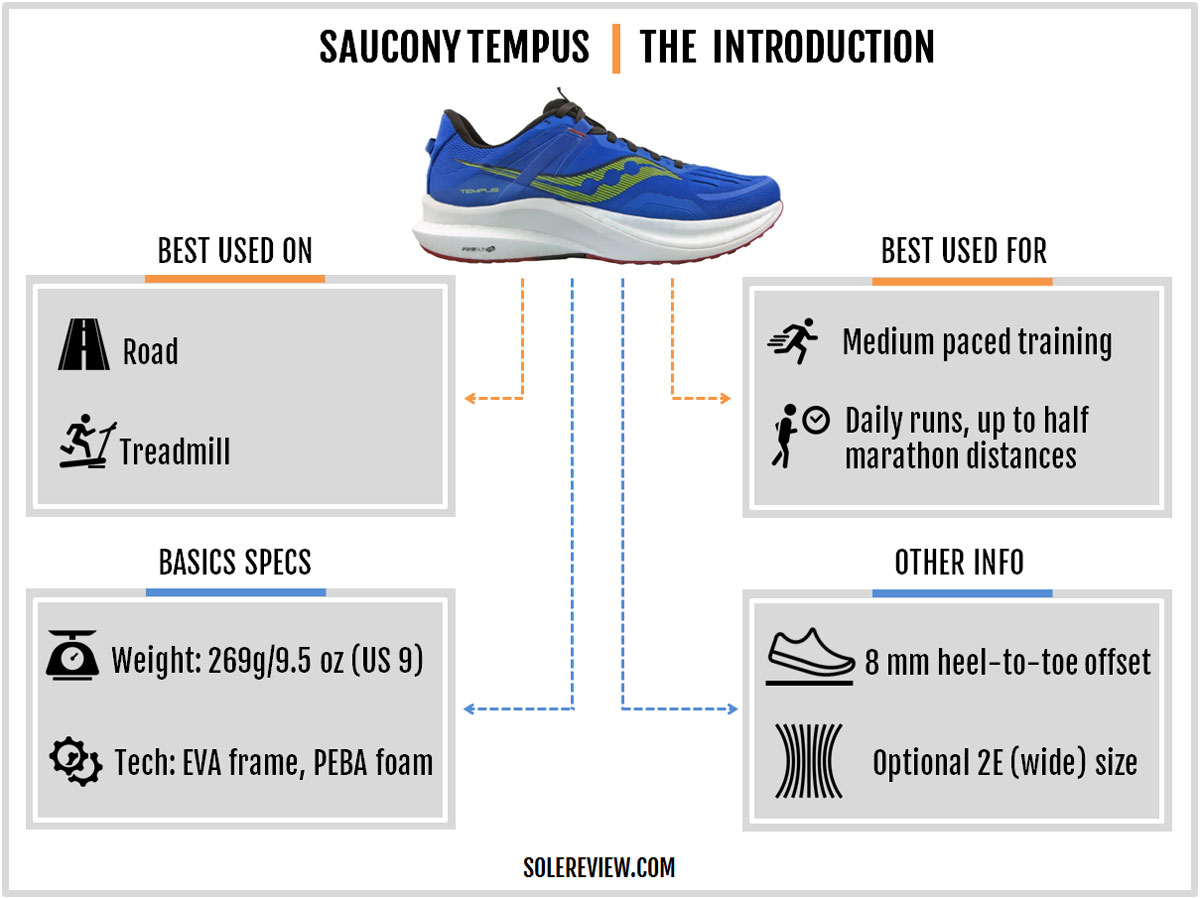
For many reasons, the Saucony Tempus is the best-executed stability running shoe we’ve ever reviewed, and its performance far exceeds that of the adidas Sequence.
We say this because the Tempus is gait-neutral – meaning that it appeals to both neutral runners as well as folks who want a running shoe with a higher level of medial support.
The adidas Sequence made the medial side overly supportive, and that resulted in a cushioning bias that favored the exposed Boost side.
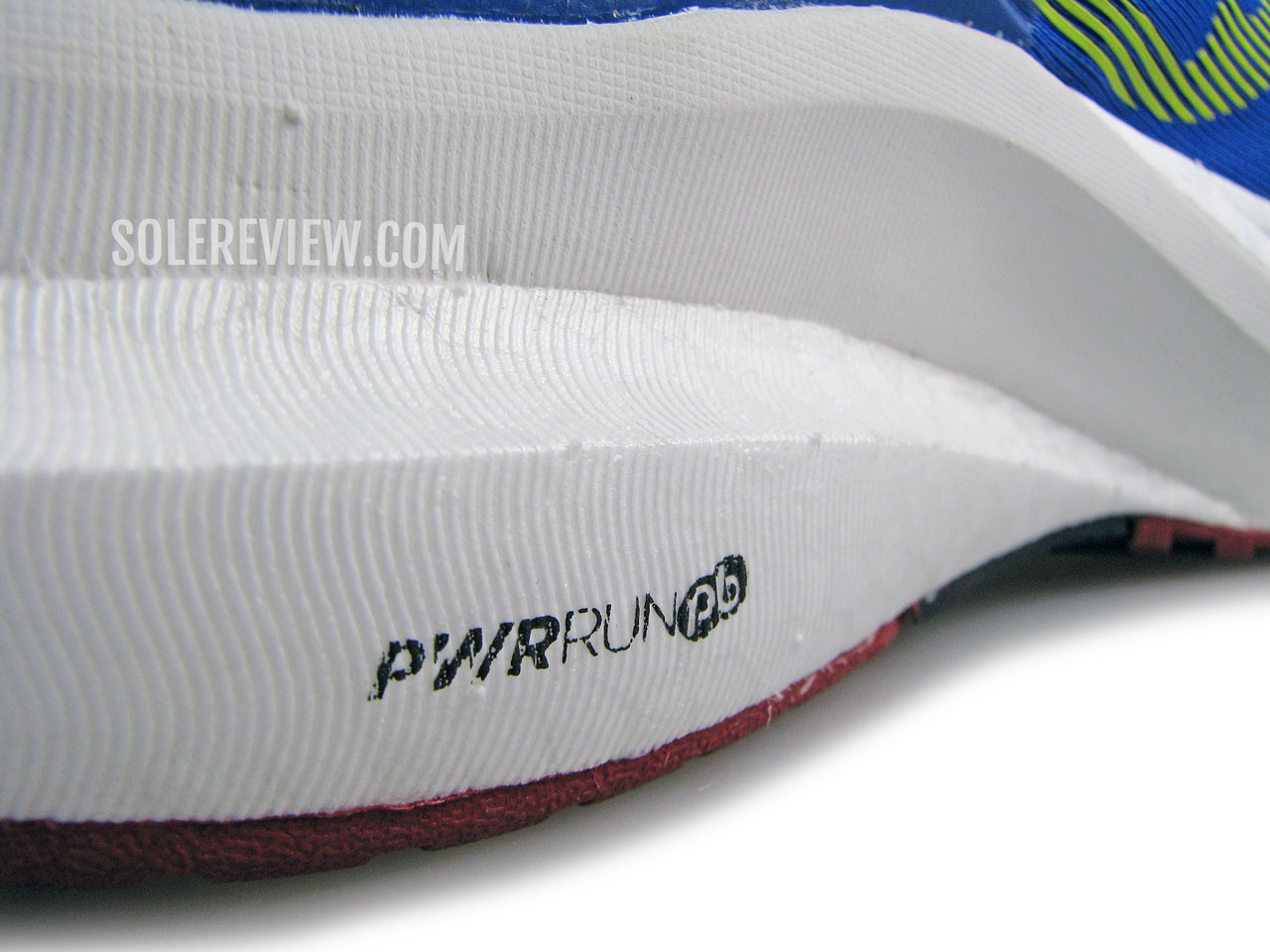
The Tempus combines an EVA frame with a softer Pwrrun PB core – the same material that’s used on the Endorphin Speed and Pro.
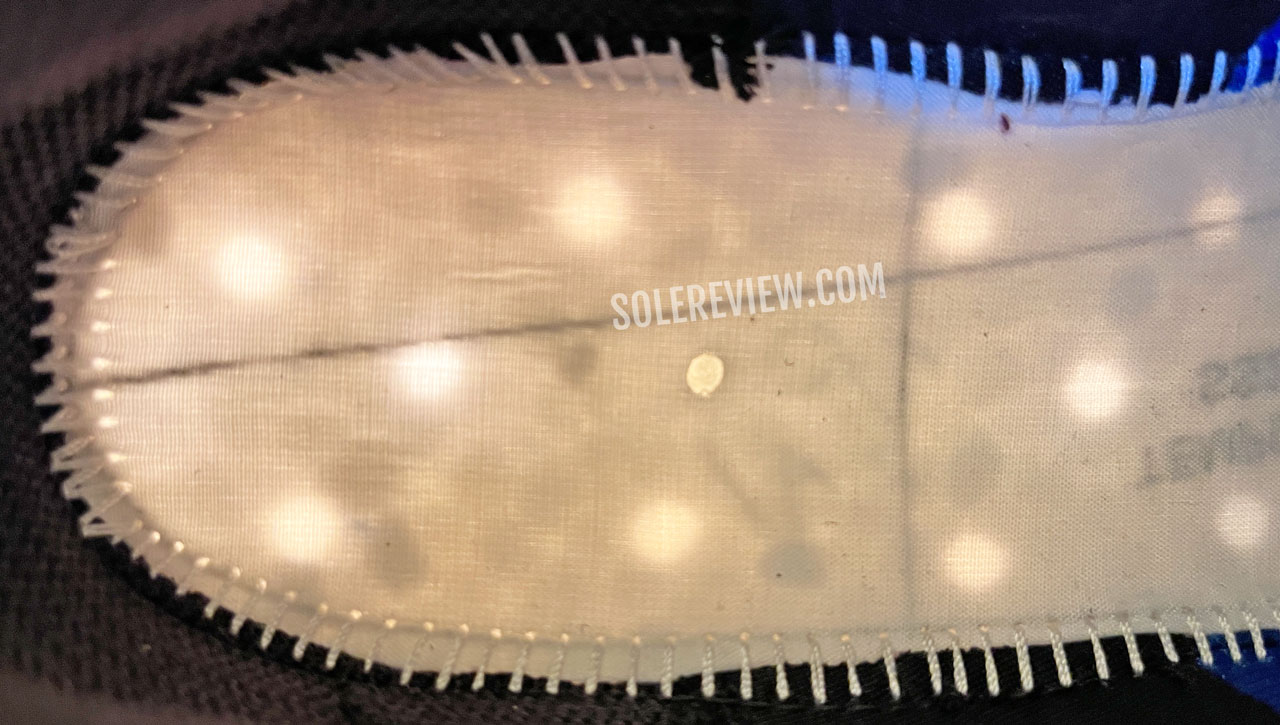
The midsole core is 100% PEBA; only the sides are supported with the firmer EVA frame.
The Tempus has a more mature behavior; the firmer medial midsole is counterbalanced by a wide heel flare on the outer side.
Unlike the adidas Sequence Boost, there’s nothing between the foot and PEBA core – except for the removable insole and fabric lasting. This design helps stabilize the foot over the midsole without leaning towards the outer side.
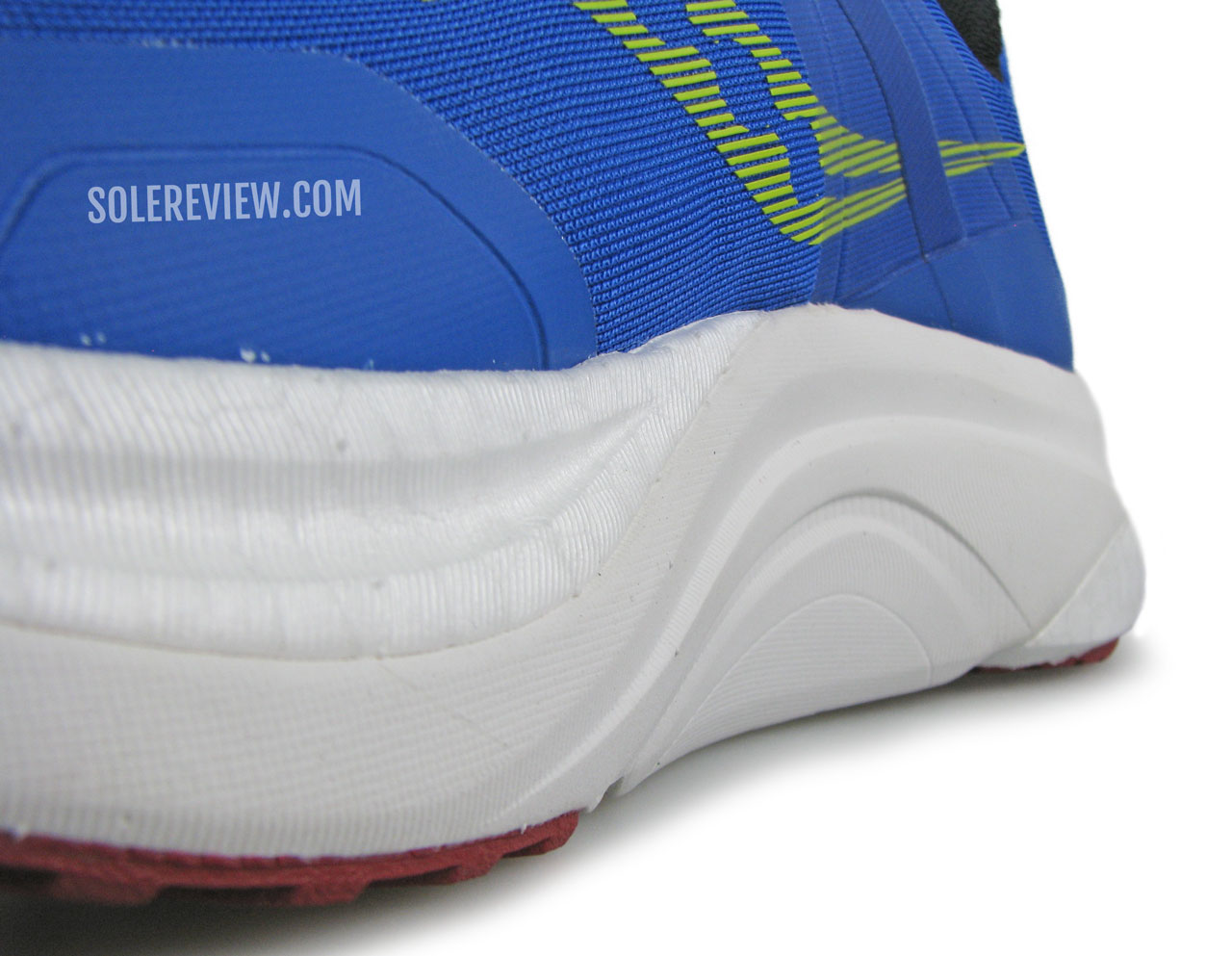
The inner side is supported with a solid EVA foam sidewall.
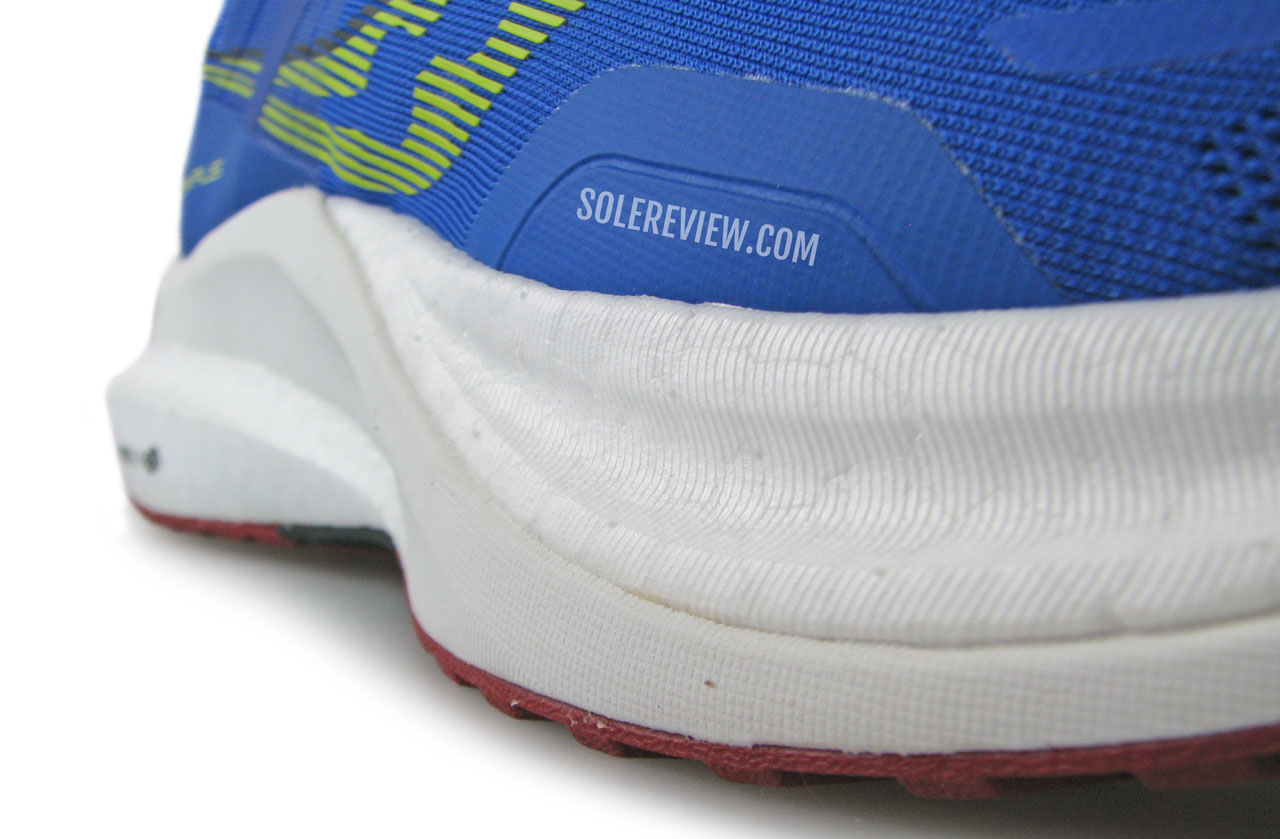
The EVA frame slopes downwards to form the forefoot base.
Also, while the EVA frame is on top of the midsole under the heel, it curves down under the midfoot to form the forefoot base. The resulting torsional support also helps reduce the cushioning bias.
It’s almost as if the EVA frame supports the rearfoot, and then conveniently gets out of the way. The high midsole edges of the EVA frame also cup the foot for support.
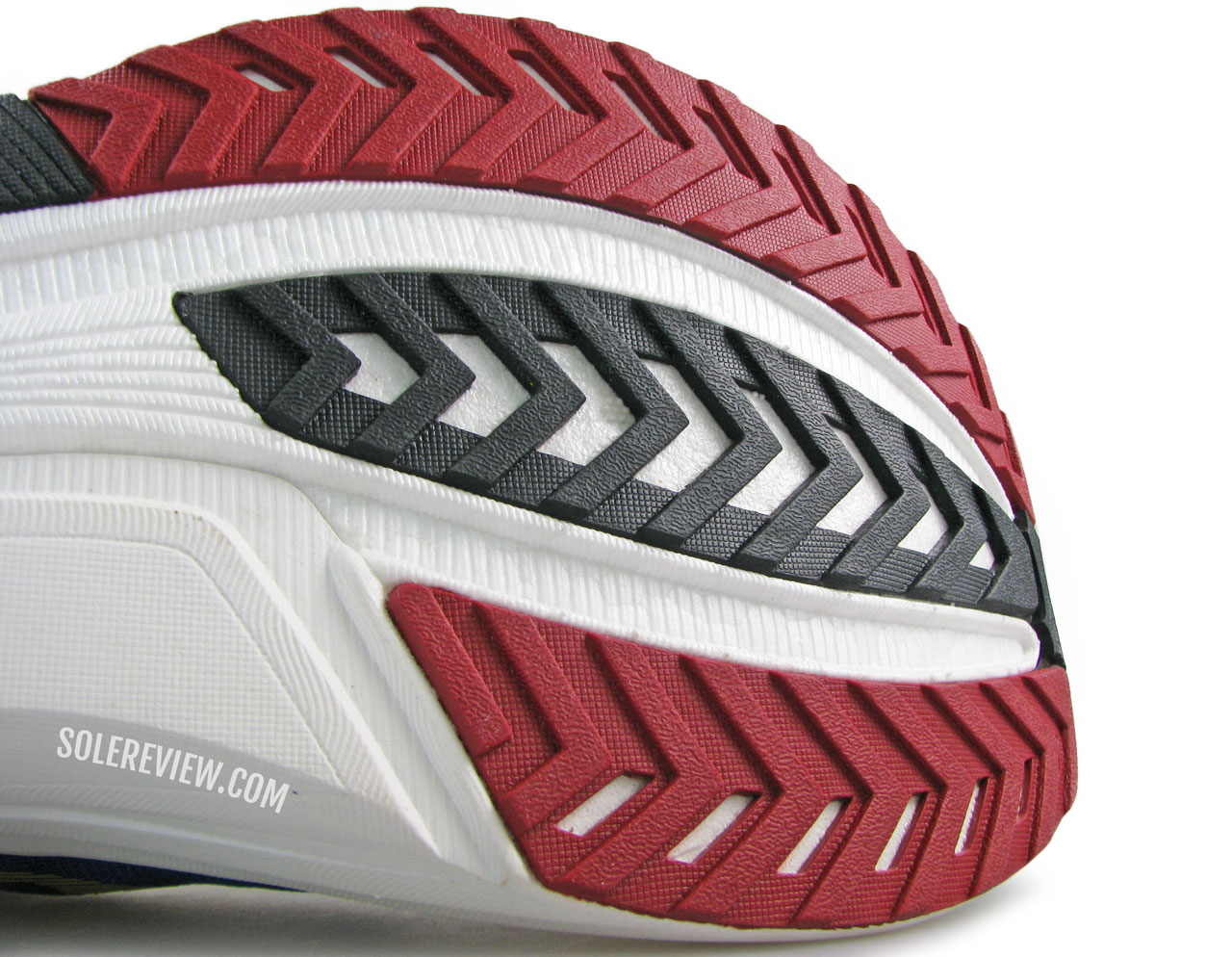
The liberal outsole coverage and wide midsole create a supportive base for landings and transitions.
The forefoot stability is excellent. The wide footprint and the firmer EVA frame under the PEBA midsole make the landings or transitions very planted, yet very cushioned.
The outsole rubber covers most of the forefoot, and that also assists with the ride stability and transitions.
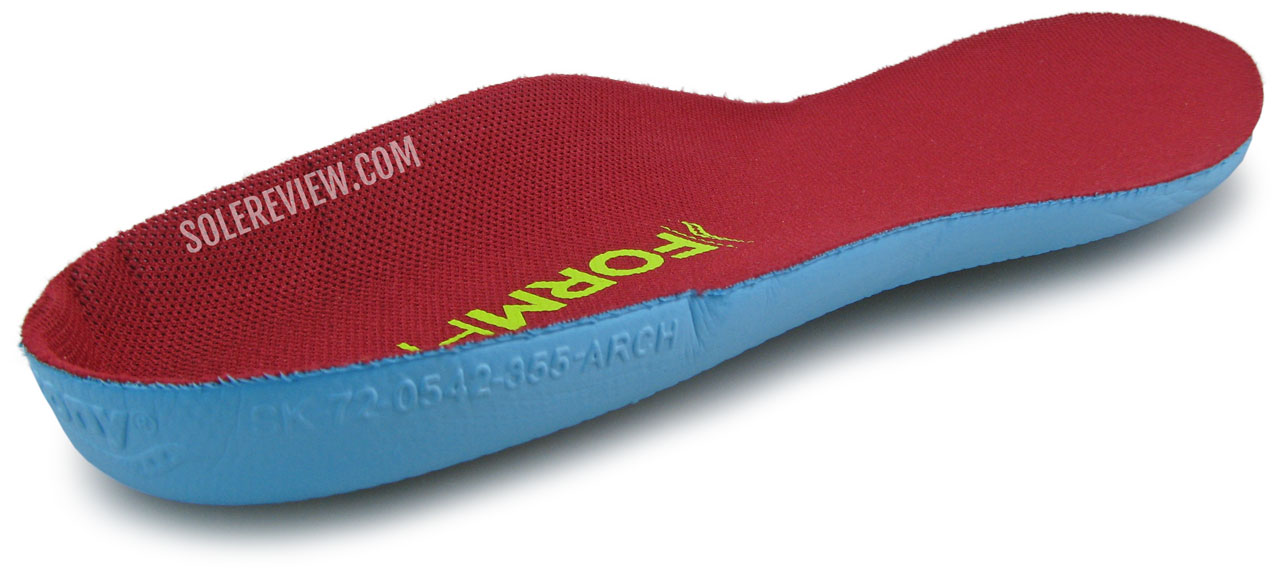
The Tempus has an EVA insole. Sorry, no Pwrrun+ here – like the Ride 15 or Guide 15.
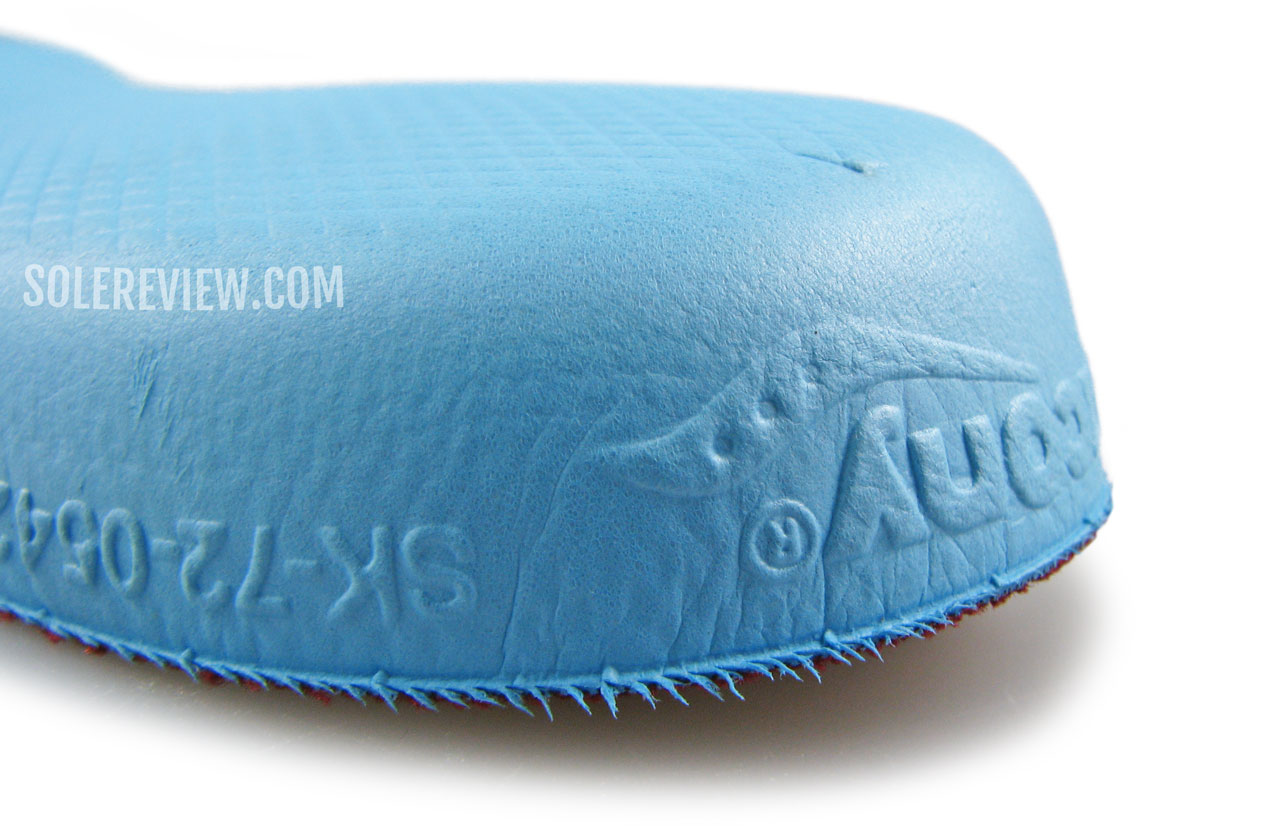
There’s a cushy EVA foam footbed over a textile lasting, and this adds a plush layer of comfort over the PEBA midsole.
What’s interesting is that despite the full-length PEBA core, the midsole isn’t super cushy or bouncy. The softness is only experienced at walking speeds, but it transforms into a medium-soft ride experience during the run.
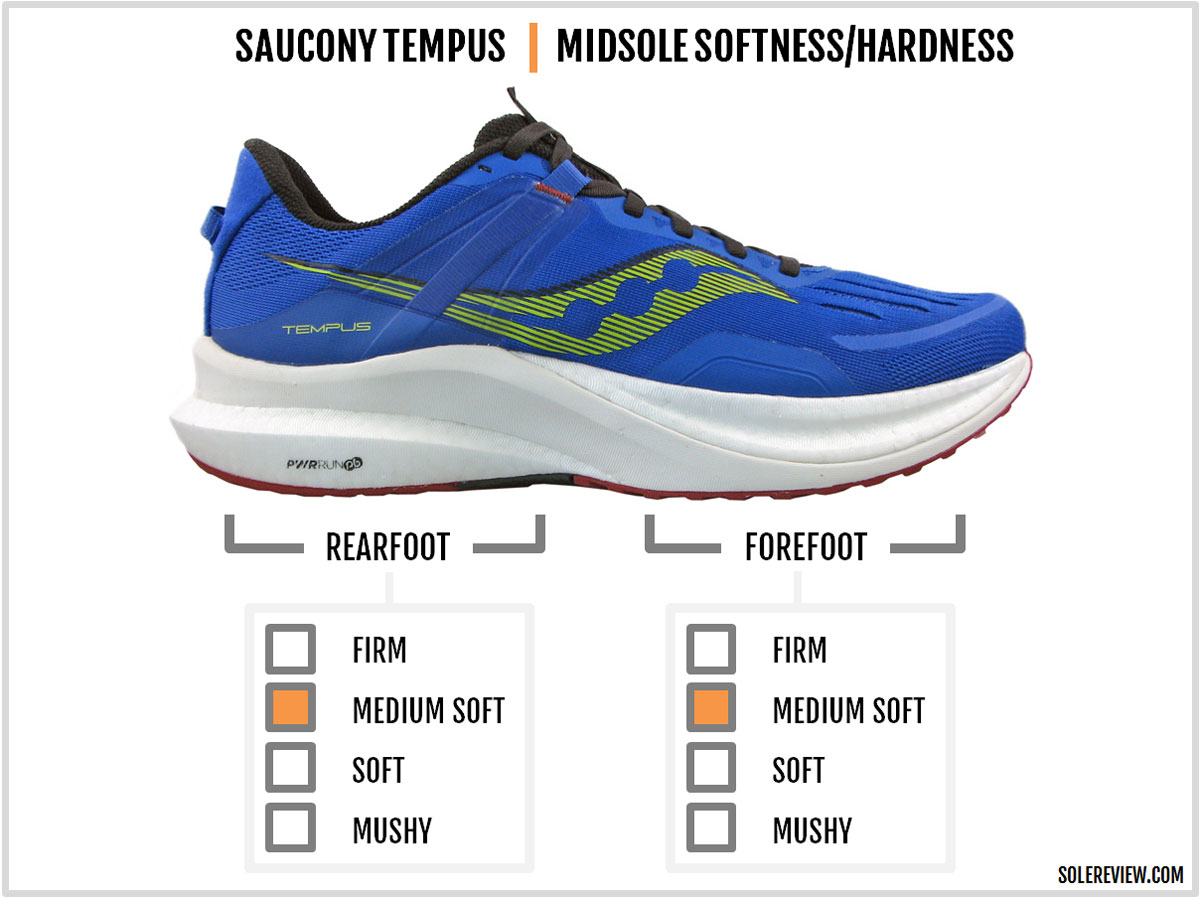
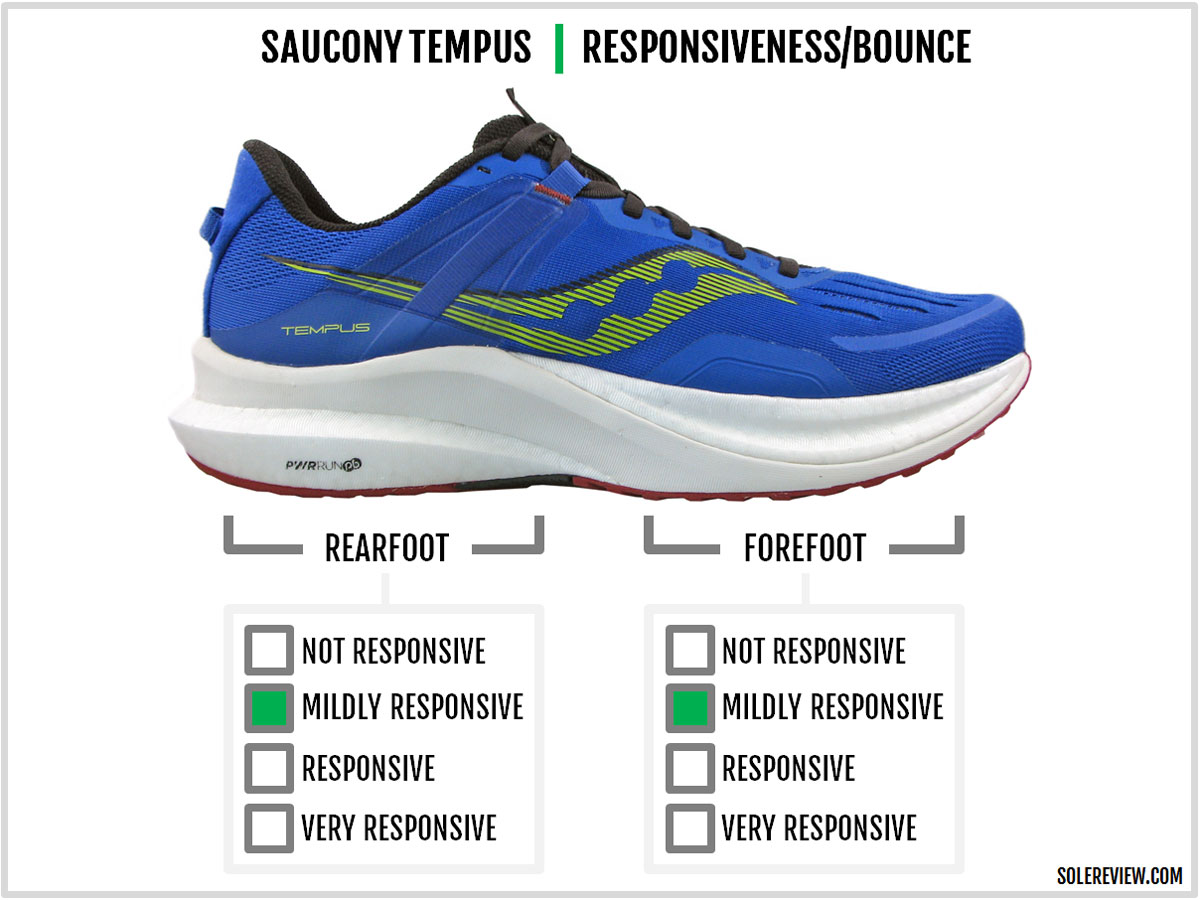
Also, don’t expect Endorphin Speed or Pro levels of bouncy feedback. On the Saucony Tempus, the responsiveness is muted at best. The midsole has a lively character, but that’s not the same thing as a springy ride.
The lack of excessive softness is actually a good thing on a running shoe that’s supposed to be supportive and tempo-friendly.
The Tempus never feels unstable, but at the same time, there’s no dearth of ride comfort. With stack heights of 36.5 mm (rear) and 28.5 mm (front), a copious amount of cushioning is available when you demand it. This can easily be your marathon-distance shoe if you want it to be. However, a snappy plate isn’t a part of the package.
The semi-soft ride, inflexible forefoot, and heel bevel make this 8 mm offset shoe good for any foot-strike orientation.
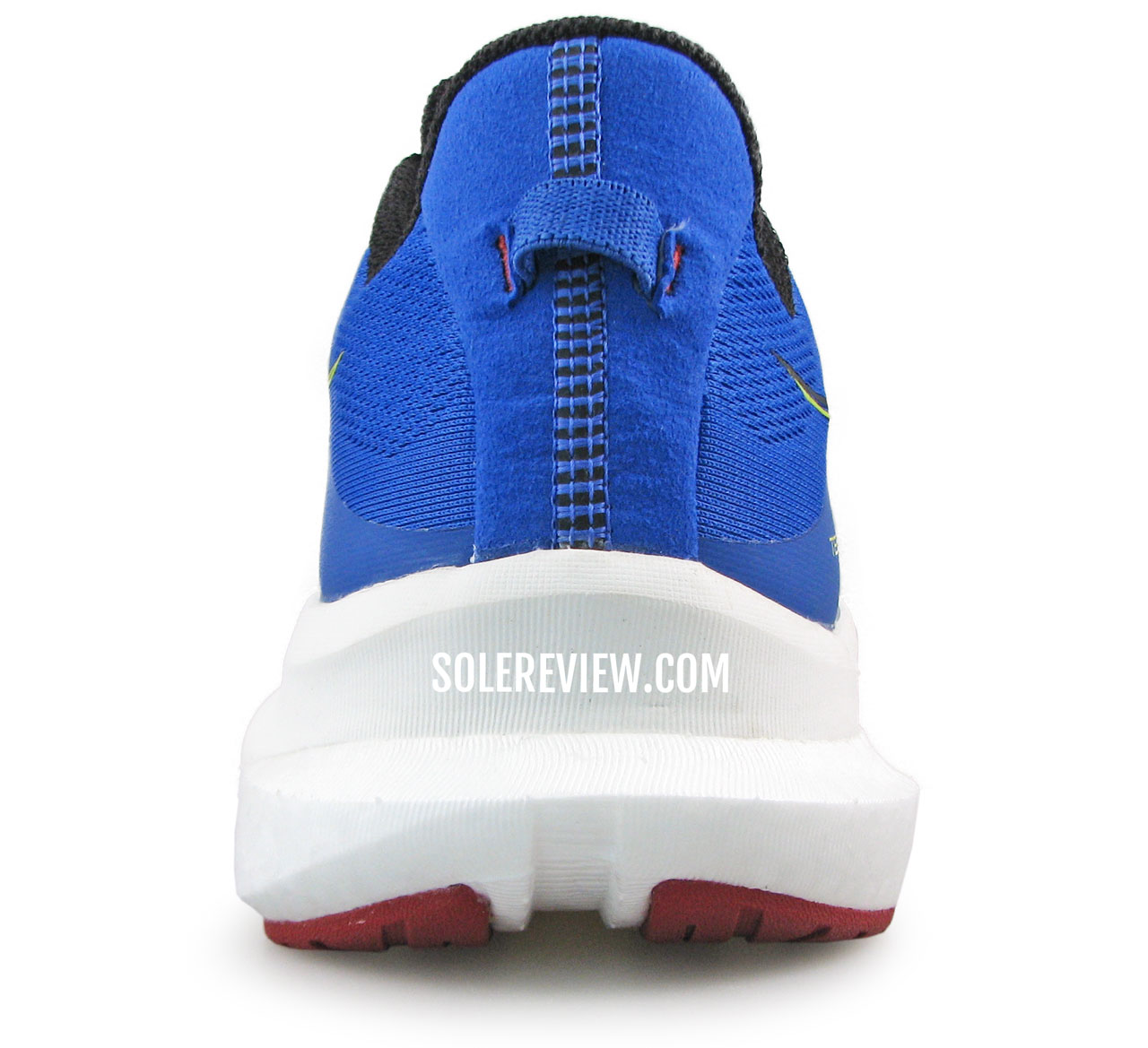
The wide base of the rear midsole helps with the ride stability.
The angled heel and wide heel flare is friendly for rearfoot strikes, whereas the wide and cushioned forefoot and midfoot make full-contact landings feel natural.
There’s a reason why Saucony calls this shoe the Tempus – the ride quality promotes efficient transitions. Though the EVA frame has a firm medial side, it never feels distracting and is an integral part of the midsole.
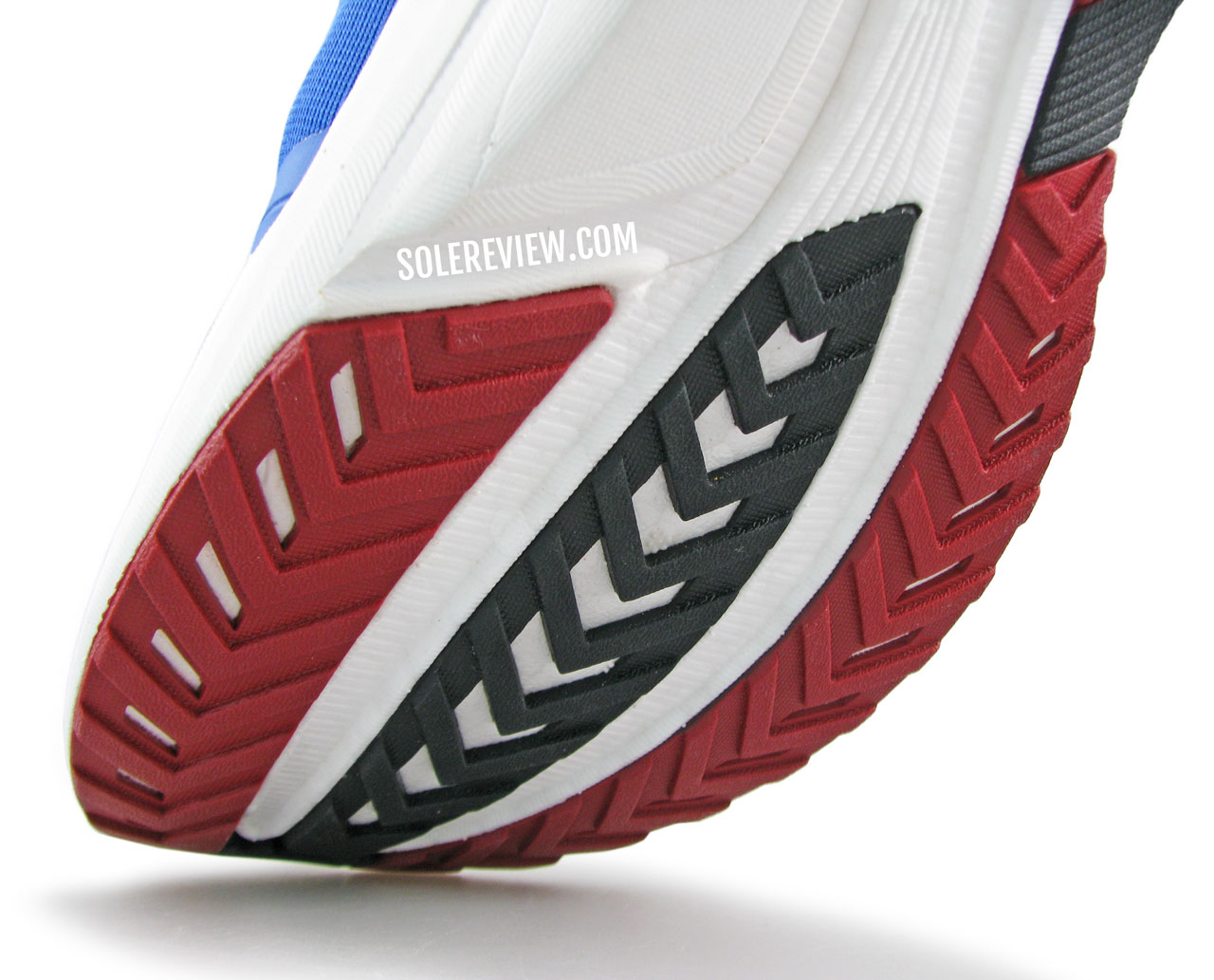
The inflexible forefoot produces a rocker-like ride behavior for tempo runs.
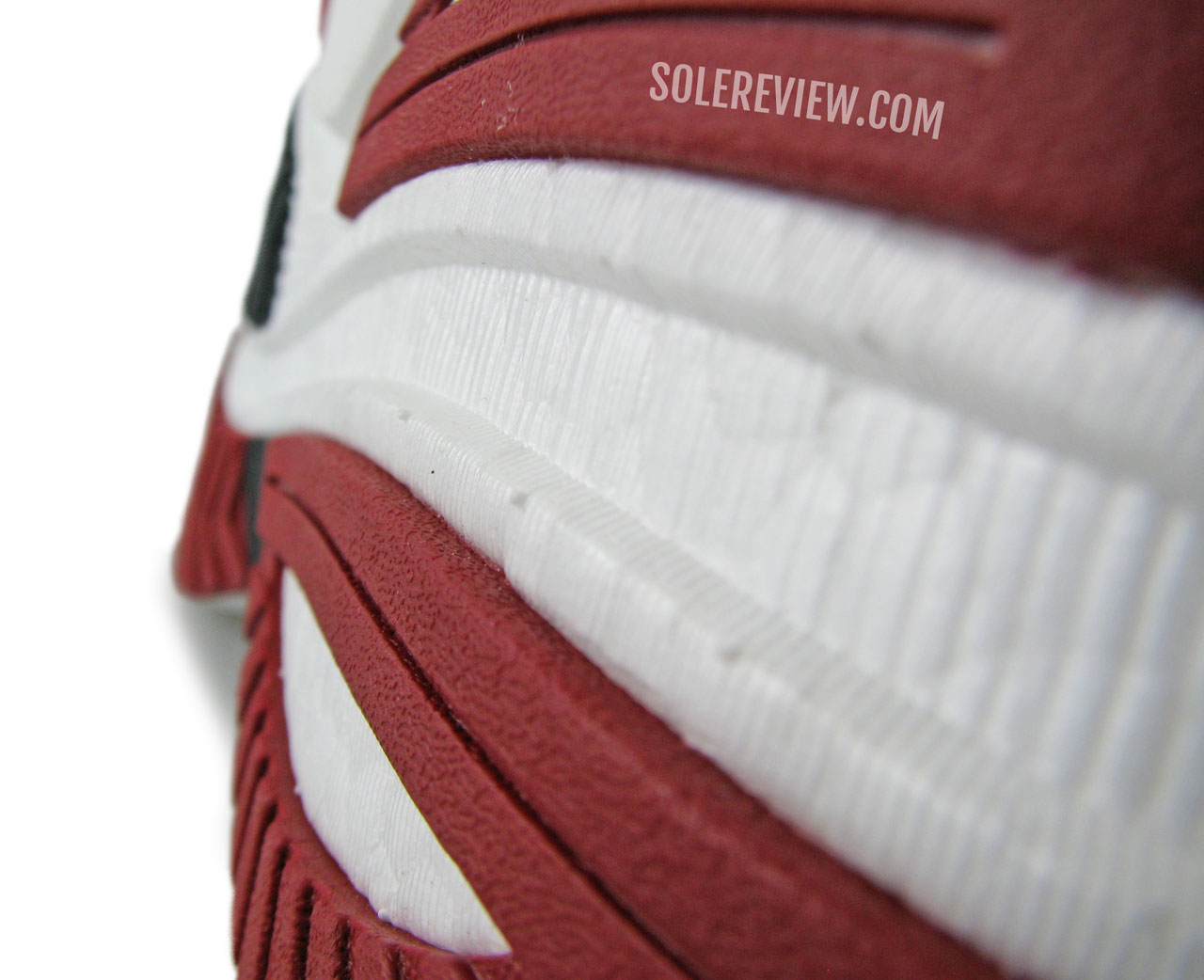
The narrow and shallow transition groove does not affect the cushioning softness.
The forefoot doesn’t bend a lot, so it behaves like a rocker midsole to help with quick roll-offs. The midsole has a transition channel that helps with the tracking, but doesn’t affect the softness.
Unlike many other shoes with a transition groove, the Tempus’s channel is shallow and narrow. Thus, it makes no difference to the cushioning softness.
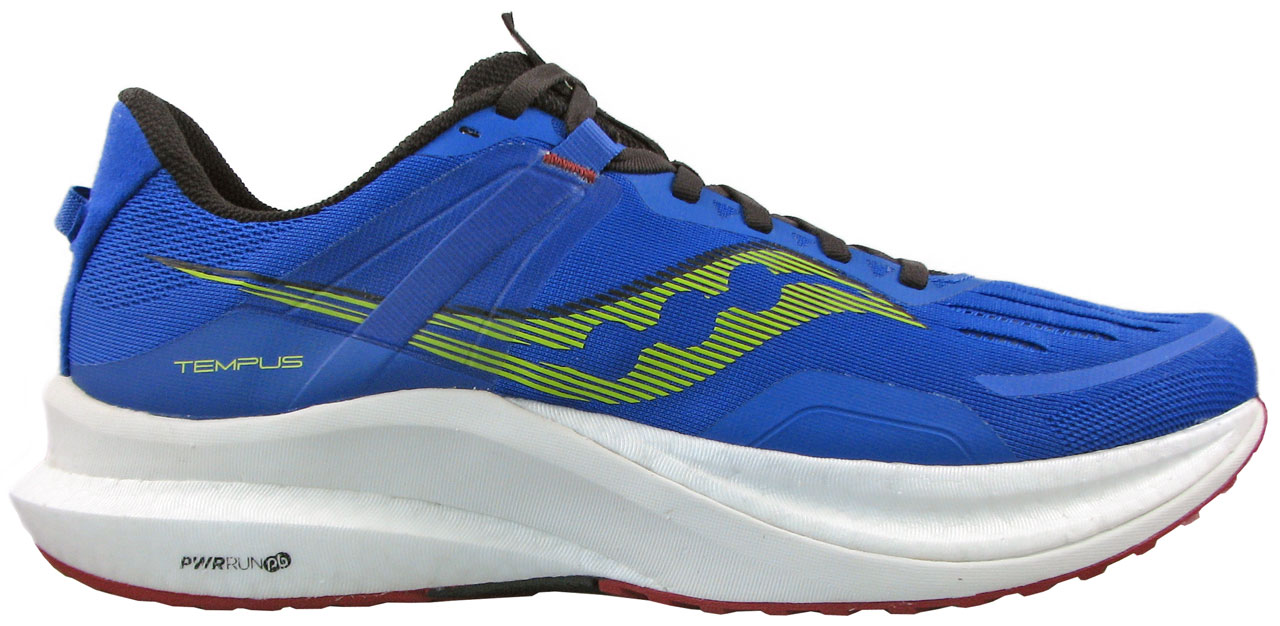
Regardless of its stability shoe positioning, the Saucony Tempus is an extremely versatile running shoe.
The Tempus lives up to its name; it’s a versatile running shoe that works equally well at different speeds and mileage ranges. Despite the dual-density configuration, the shoe only weighs a mere 8.9-ounces or 252 grams. Not only does that makes it the lightest stability running shoe on the market, but also enhances its multi-role capabilities.
For example, while the Tempus is an excellent daily trainer, it’s also quick and lightweight enough to feel comfortable at paces of 4:30 min/km (7:00 min/mile) and even faster – thus making it a shoe for tempo runs.
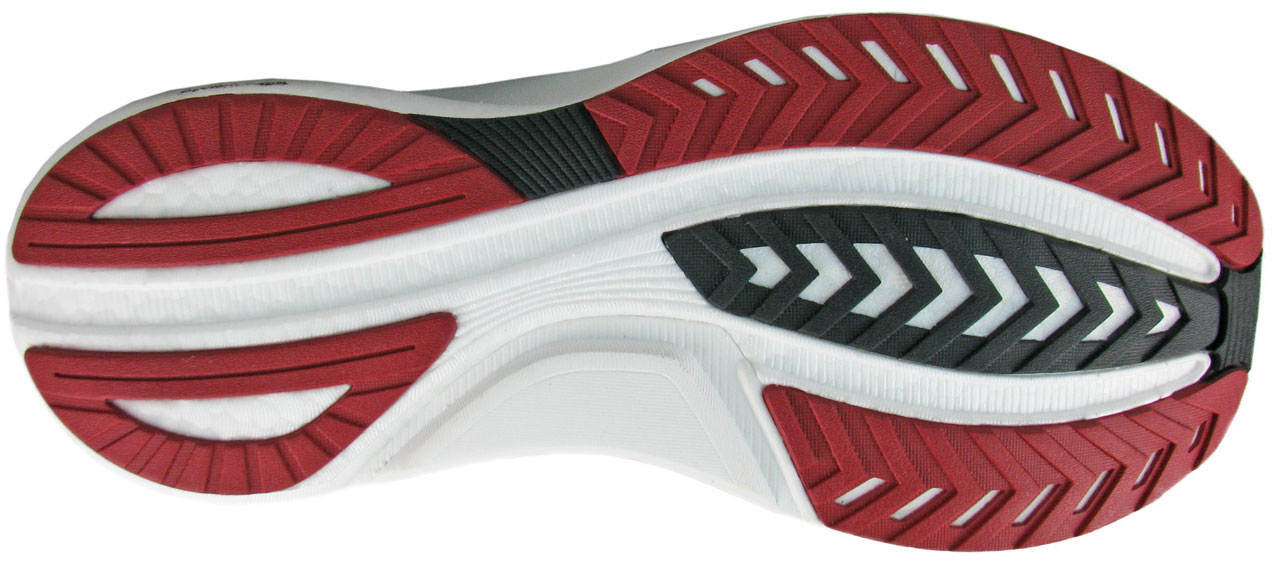
The firm rubber outsole is good for durability, but offers average traction on wet roads.
We only wish that the outsole traction was better on wet roads.
Saucony uses a hard rubber for its outsole, and while that’s great for durability and dry surface grip, things just aren’t as great on damp roads and pavements.
RECOMMENDED ROTATION
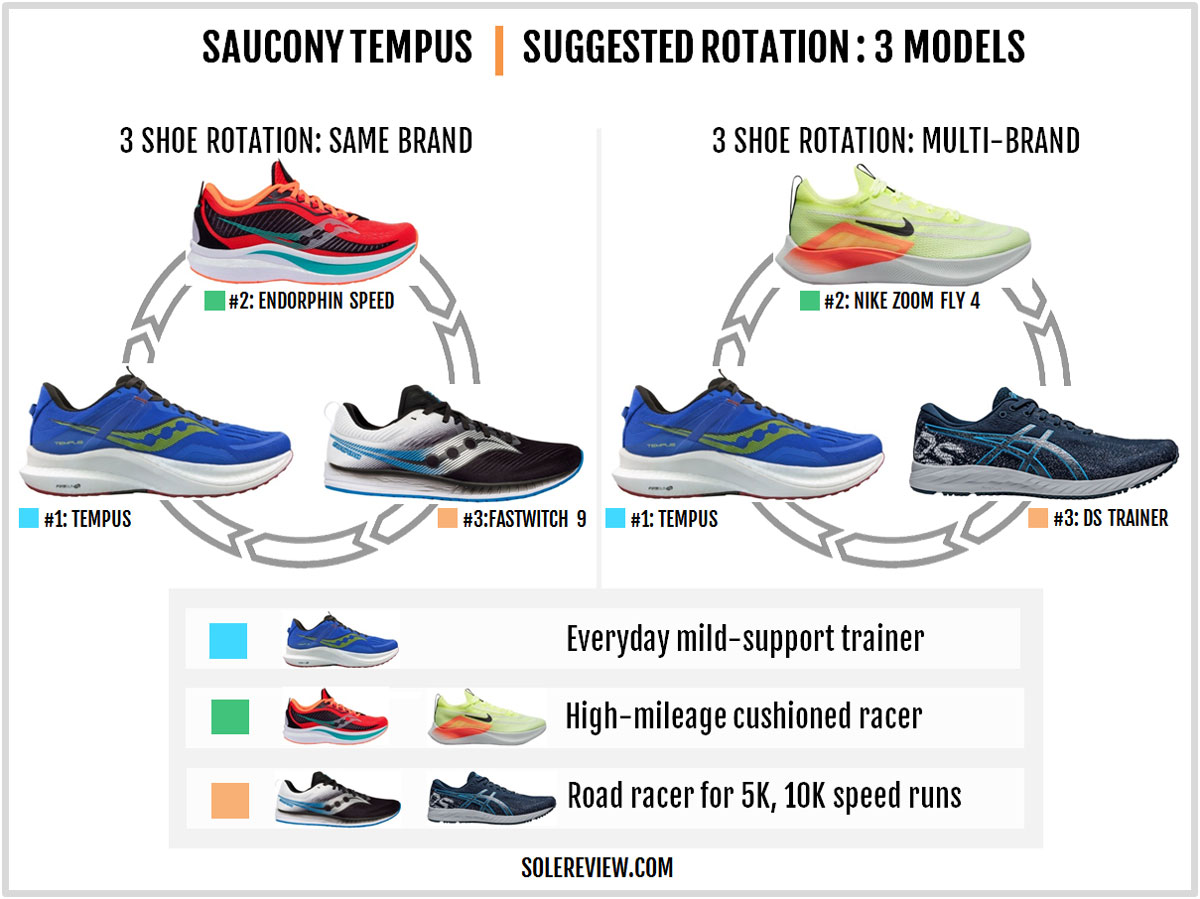
A comparison with the Saucony Endorphin Speed 2 and Pro 2 is unfair, because the Tempus lacks the plate that makes the Endorphin duo engaging to run in.
Thus, getting the Endorphin Speed or Pro adds rotational value. The plated racers are better suited for marathons, whereas the Tempus could be your daily trainer and tempo runner.
Nike sells the Zoom Fly 4 (our review) and Vaporfly Next% V2, (our review) so those are your other tried-and-tested alternatives to the Endorphin.
For road racers with medial support, we recommend either the Saucony Fastwitch 9 or Asics DS Trainer 26. Their firm and low-profile ride character is great for short-distance races and speed runs.
IS THE SAUCONY TEMPUS DURABLE?
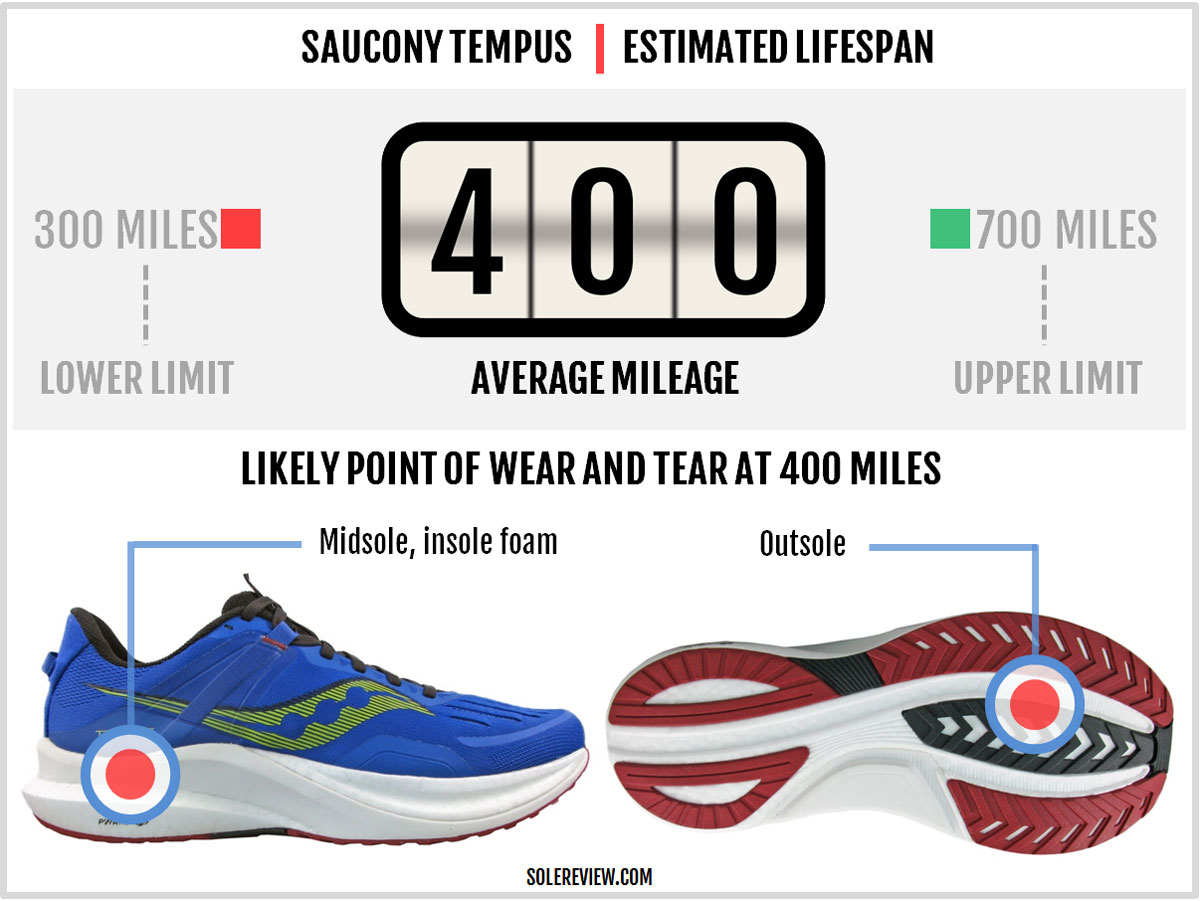
Based on our initial ownership period, nothing seems amiss from a durability perspective.
The EVA frame complements – and protects – the Pwrrun PB from creasing and scuffing, while the full-coverage outsole makes the underside hard-wearing.
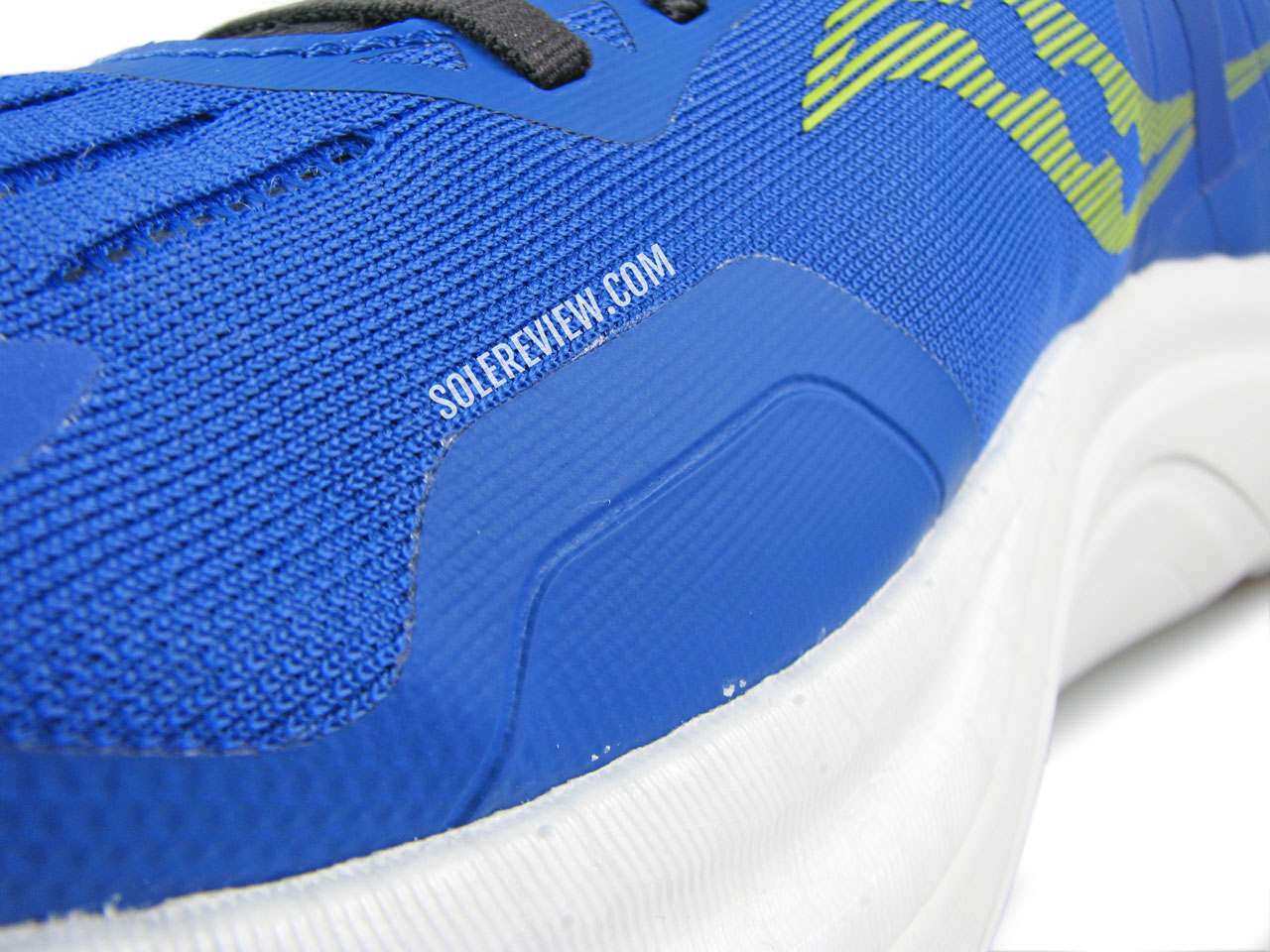
The mesh exterior is reinforced with synthetic layers for protection.
The upper looks ok for now. The forefoot is reinforced in the flex area, and the midsole edges are soft and unlikely to apply friction.
The only part we’re wary of is the reflective strip over the toe-box. Its outer end lies in the flexing zone, so repeated bending could potentially lead to peel-off. We’ll see how this unfolds. Or not.
THE UPPER DESIGN AND FIT
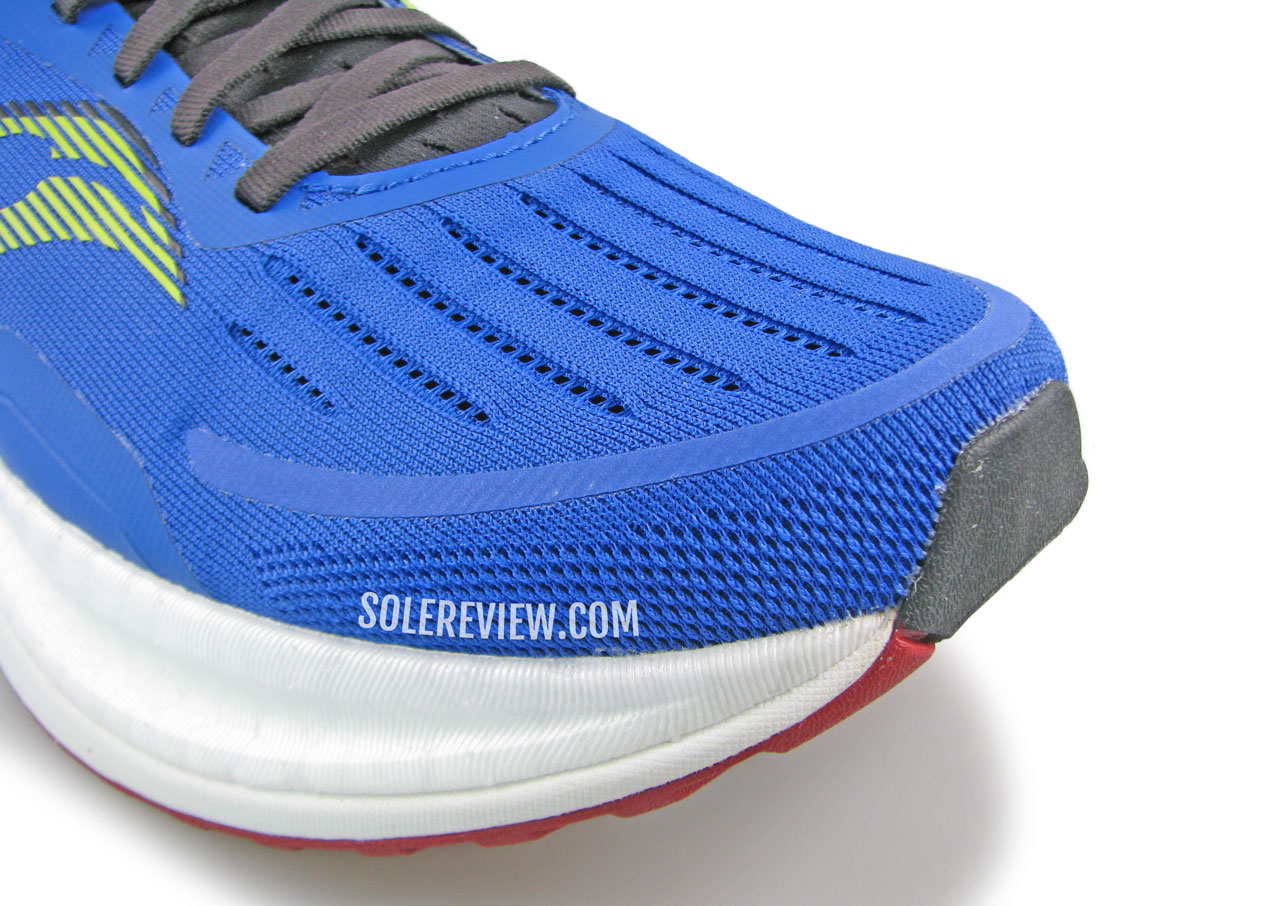
Saucony has been producing excellent uppers during the last few years, and that continues with the Tempus.
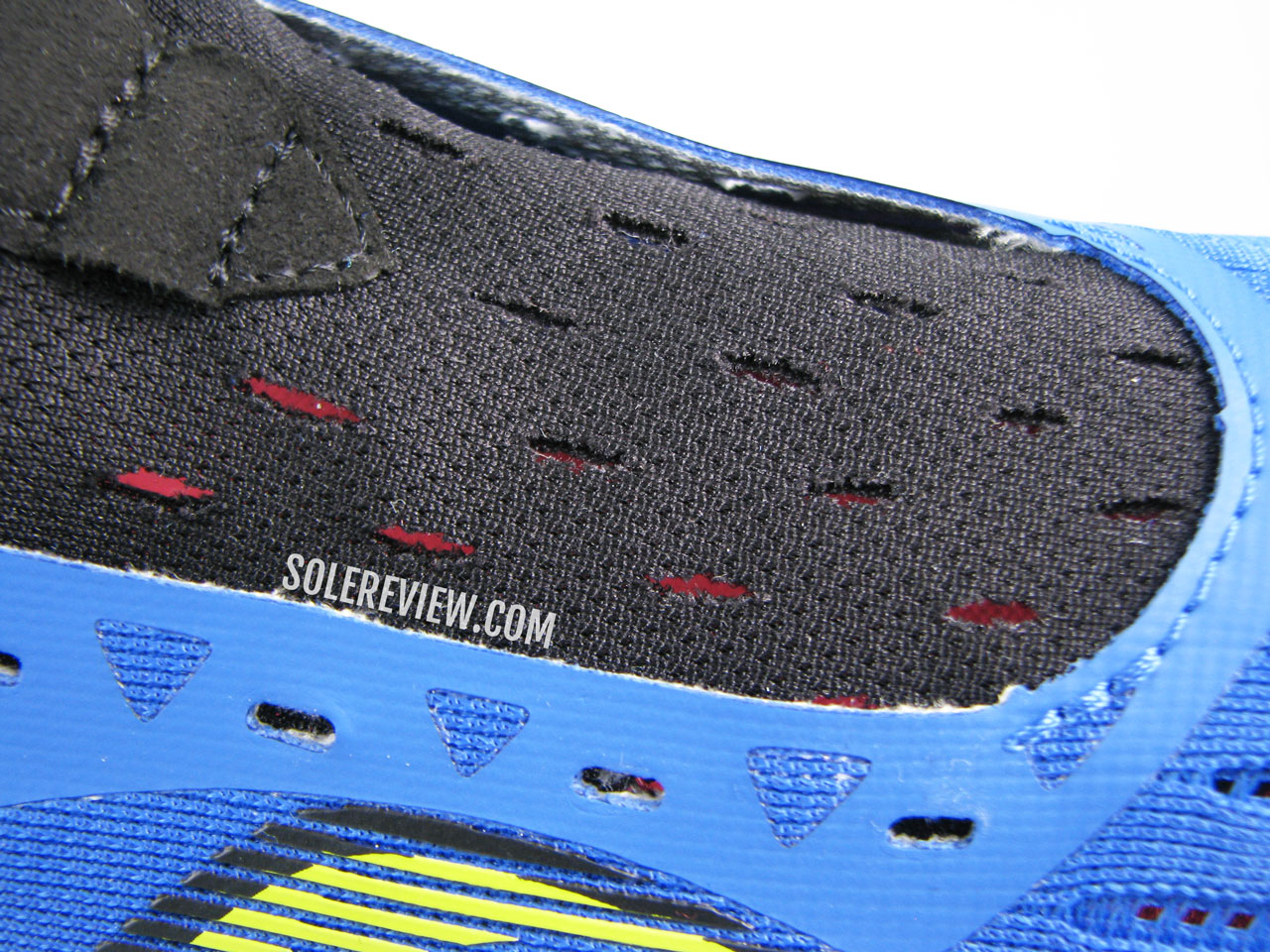
When even the tongue has vents, you know that the shoe takes its ventilation seriously.
Over the past few years, Saucony has been on a roll with its upper design. The sizing is seldom wonky, the materials are soft, and the ventilation levels are usually excellent.
The Tempus did not disappoint. Our wear-testing took place on warm mornings of 32 C/90 F, and the upper excelled at air circulation.
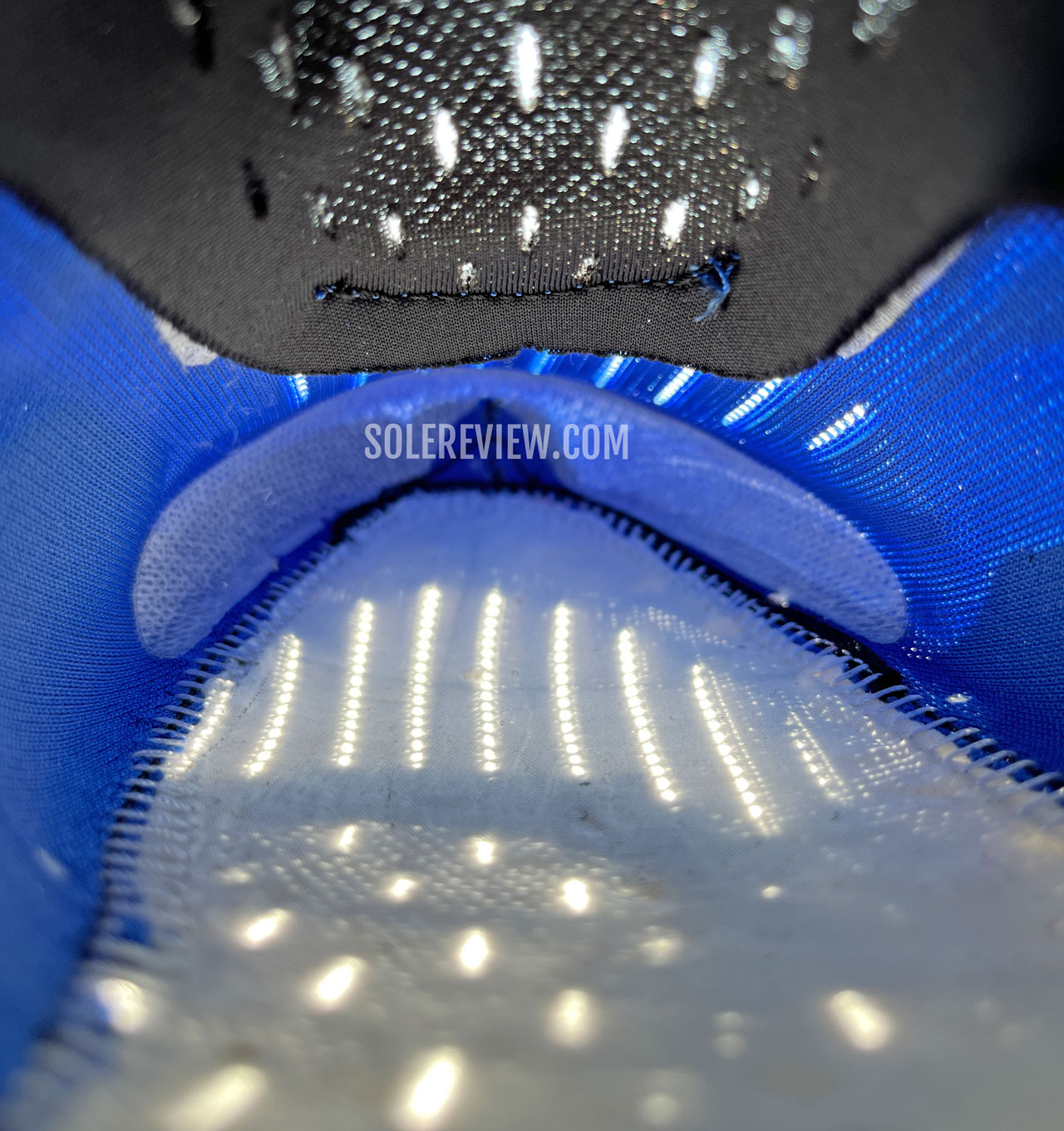
The highly breathable toe-box also has an internal bumper that helps the upper retain its shape.
Here’s what the Tempus’s insides look on a summer day. The forefoot and tongue are generously vented to keep the interiors cool during warm weather runs.
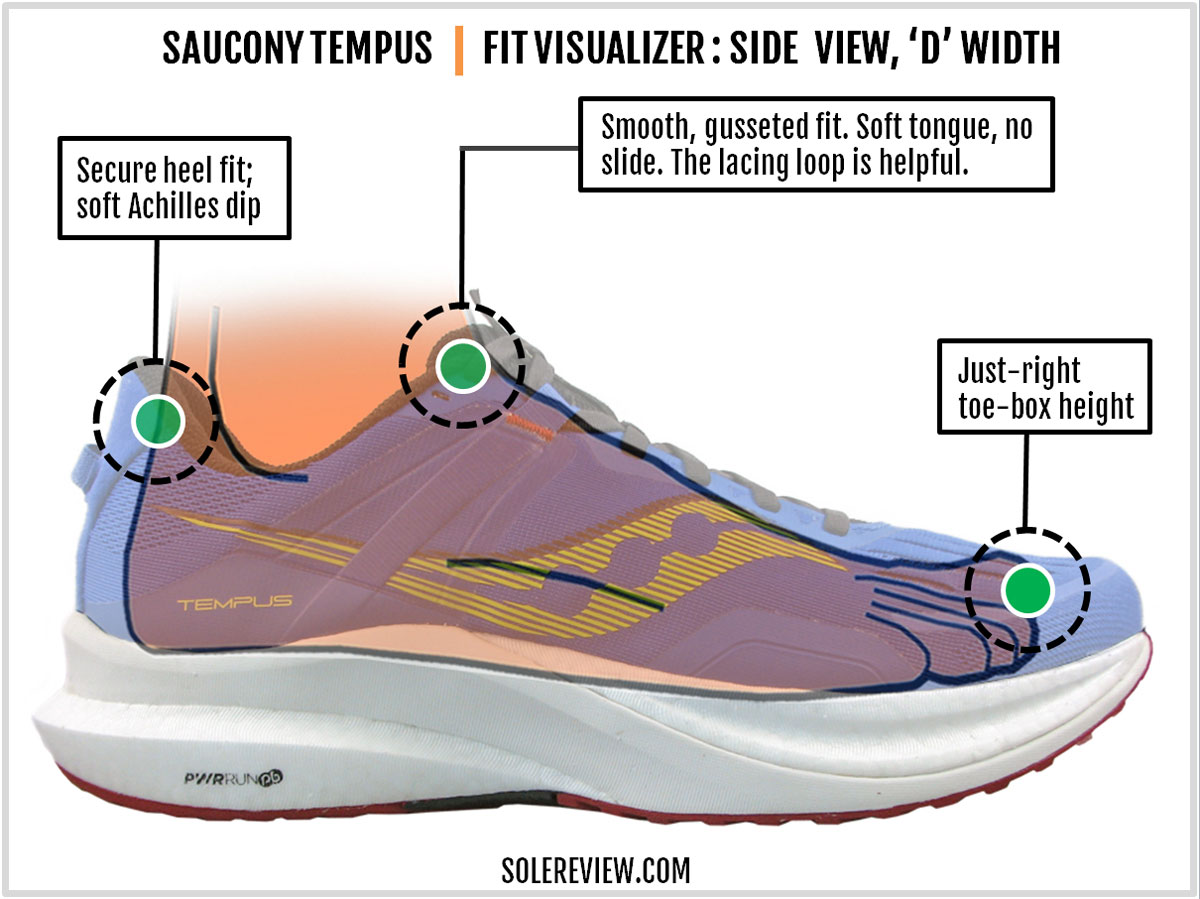
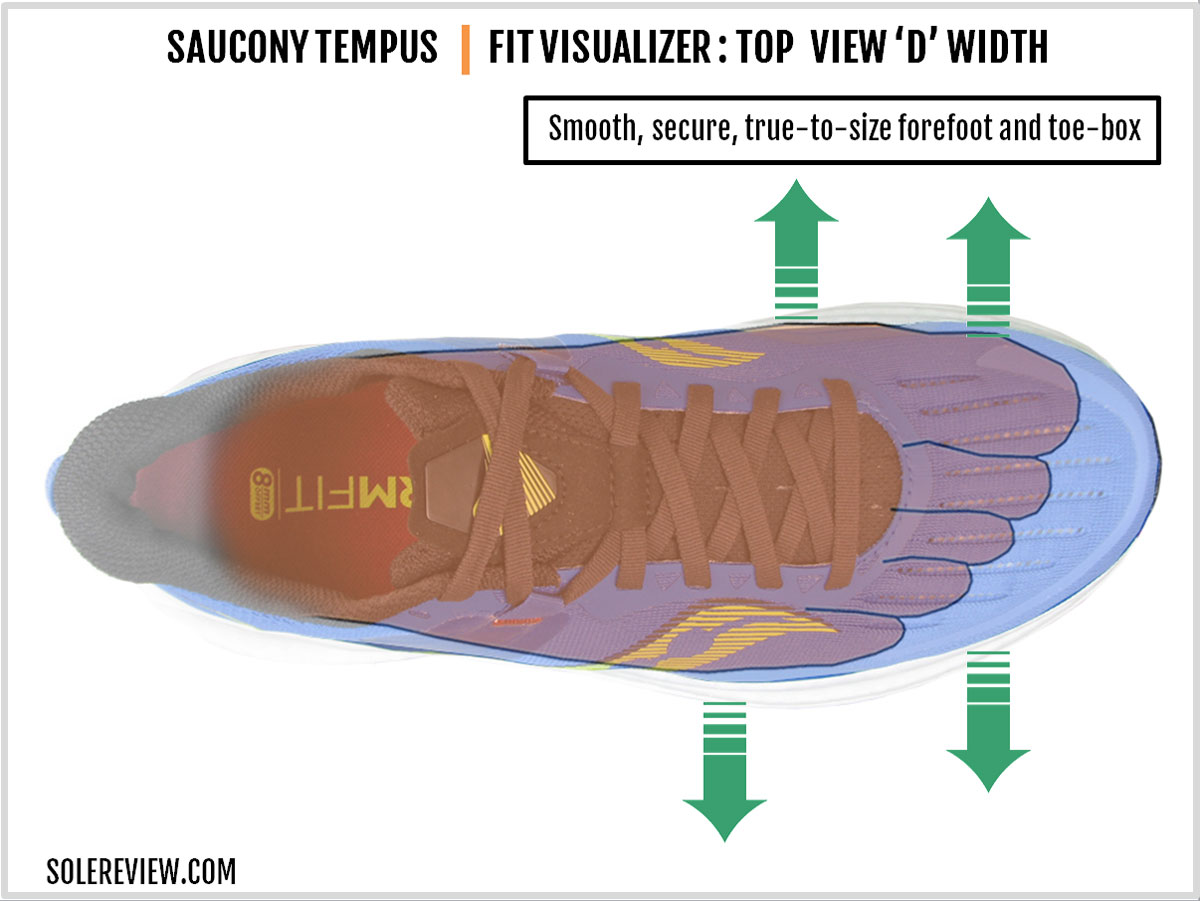
Of course, there are other things that the upper design excels at. The fit is true-to-size, and the toe-box is just right.
The fit security is excellent; the forefoot grips the foot without exerting any hot spots. For wider feet, Saucony also offers a 2E width.
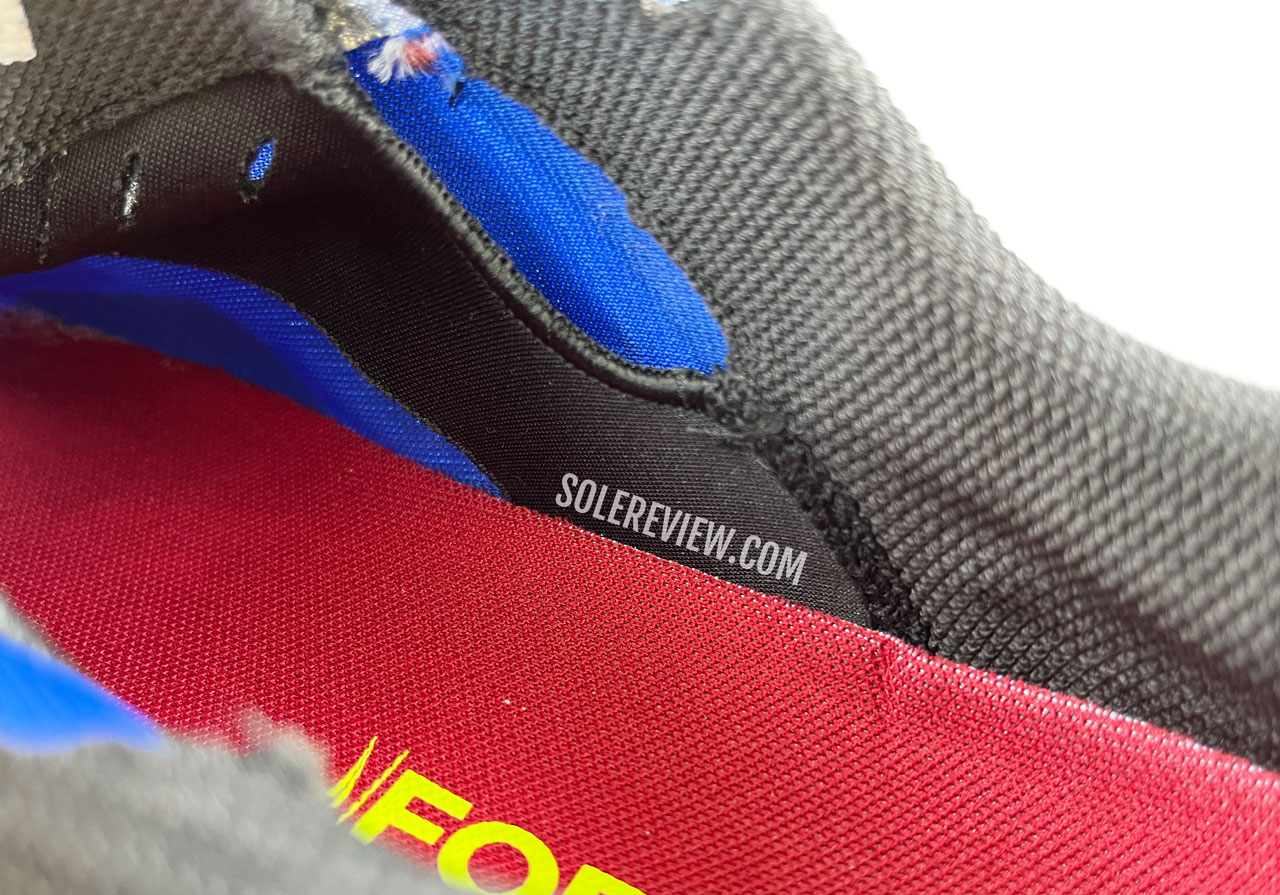
The elastic gusset improves the midfoot fit without making the fit narrow.
Unlike the Saucony Guide 15, the Tempus doesn’t have a full inner sleeve, but only a saddle made of a slightly elastic mesh. So it does what it’s supposed to, but without being a distraction.
And that’s what the Tempus’s upper is – a distraction-free fit experience. In many ways, the upper fit and feel have more in common with the Kinvara 13 and Endorphin Speed than it does with the Guide 15.
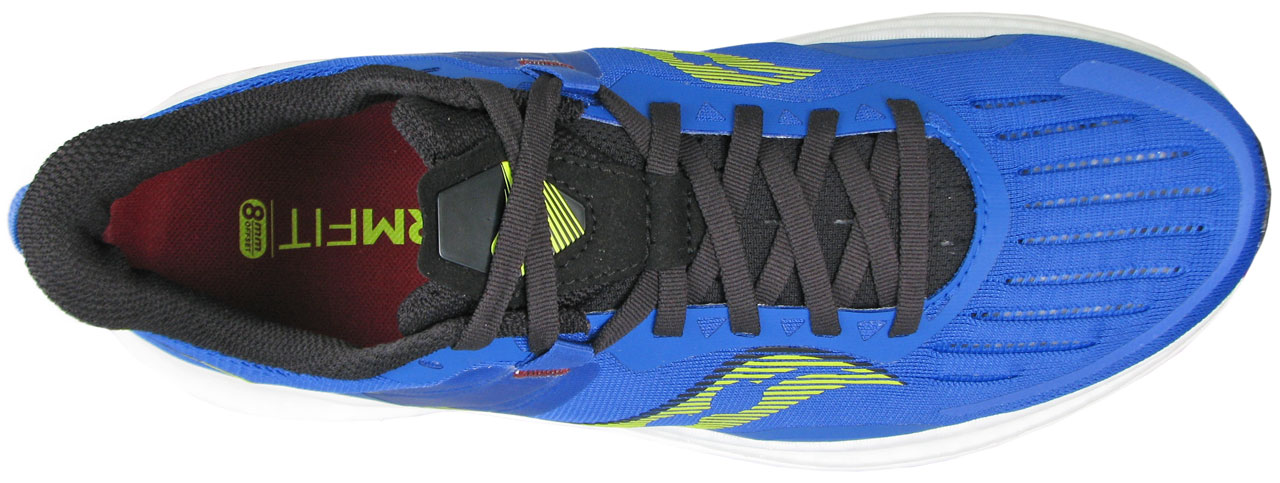
The minimal upper of the Tempus is modeled on the Kinvara and Endorphin series.
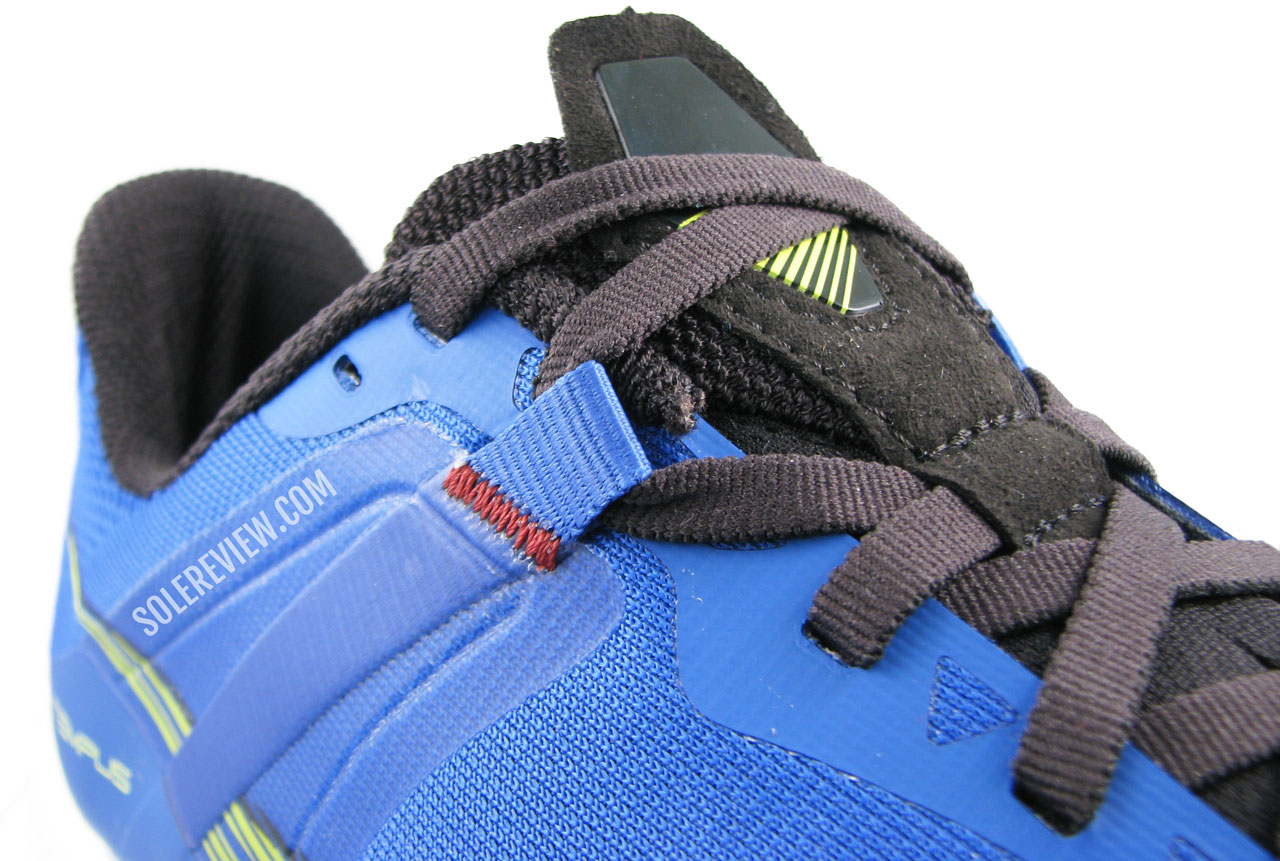
The semi-stretch laces are easy to cinch, and stay tied. The loops help as well.
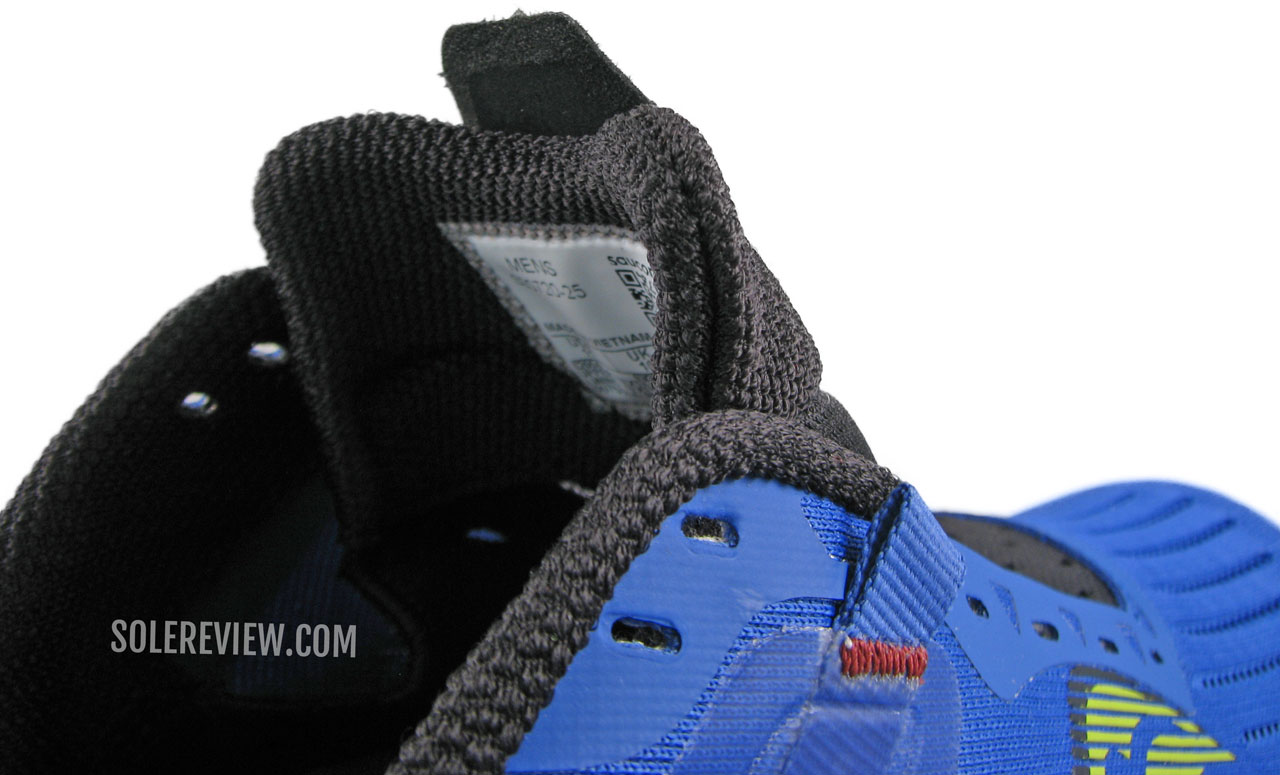
The tongue flap could have done with more foam padding, though.
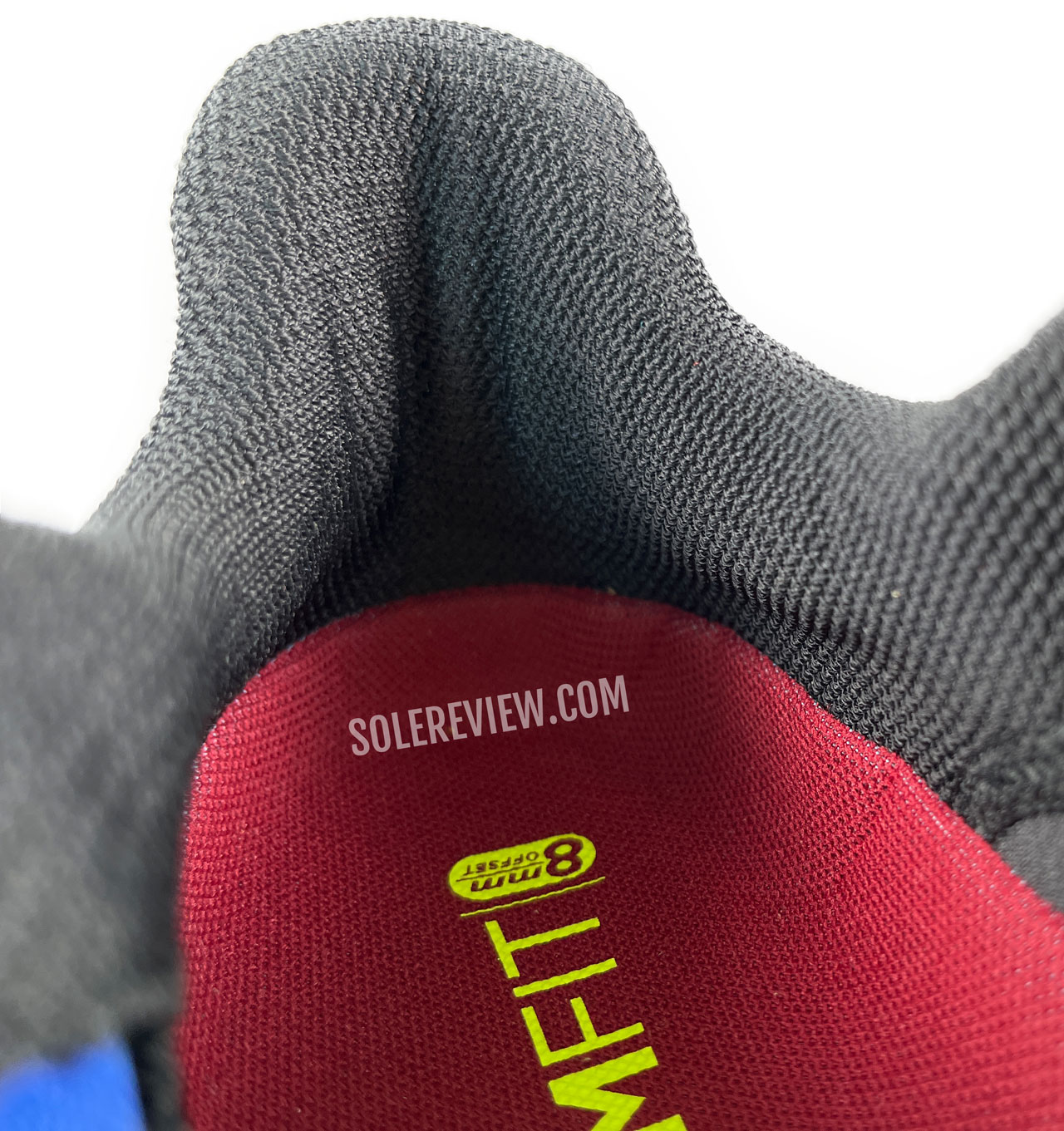
The heel collar has just the right amount of padding. An internal heel counter cups the foot for stability.
Though the lining has a soft hand feel, the foam padding is kept to a minimum. We think Saucony was too stingy with the tongue padding, because the lacing top-down pressure can be felt when cinched tight. Saucony Guide levels of tongue padding would have been ideal.
The heel has an internal counter for support, and its short height holds the heel without irritating the Achilles Tendon.
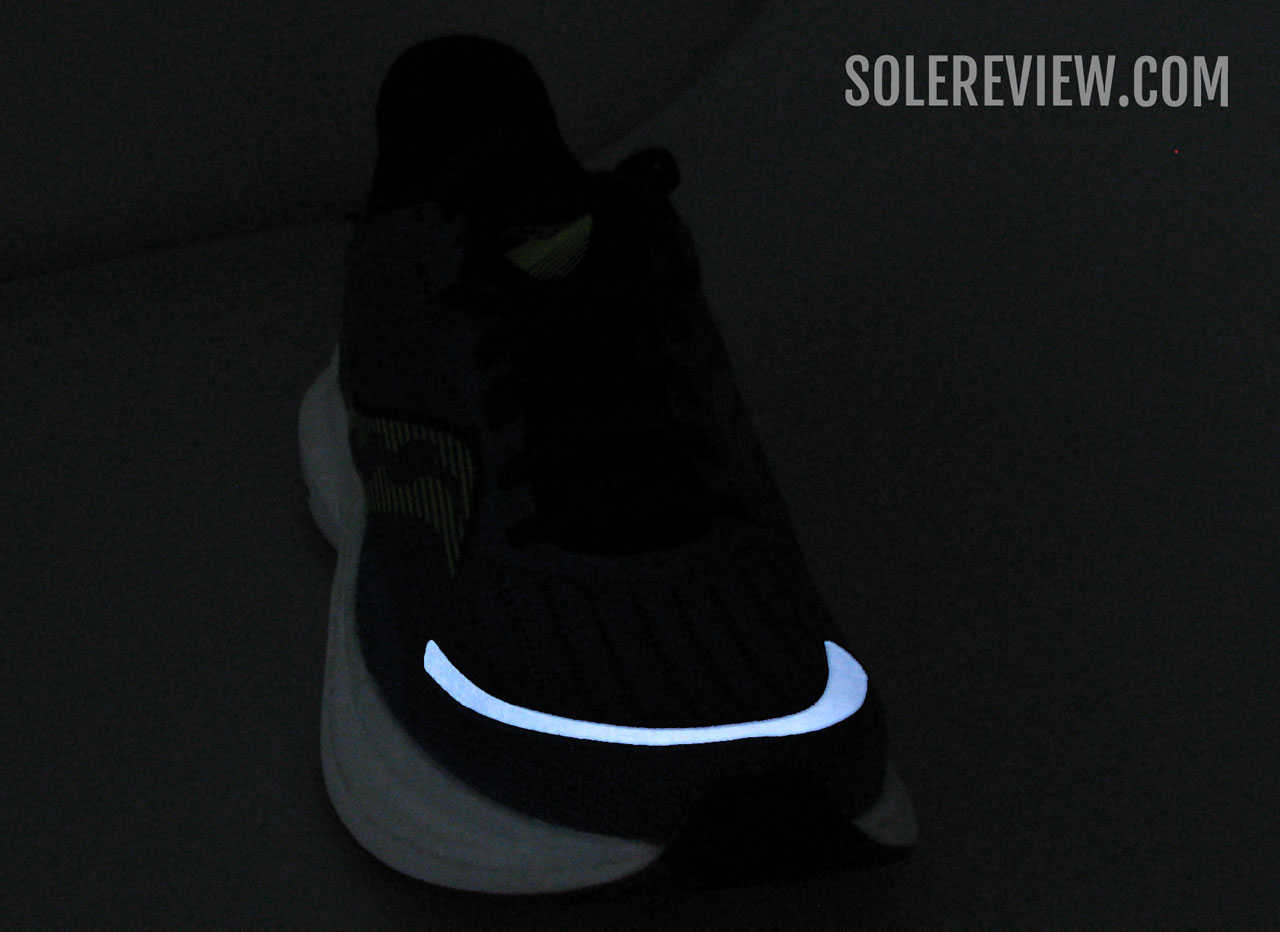
Only the forefoot is reflective; the heel gets that odd and useless loop, but no reflectivity.
PROS AND CONS
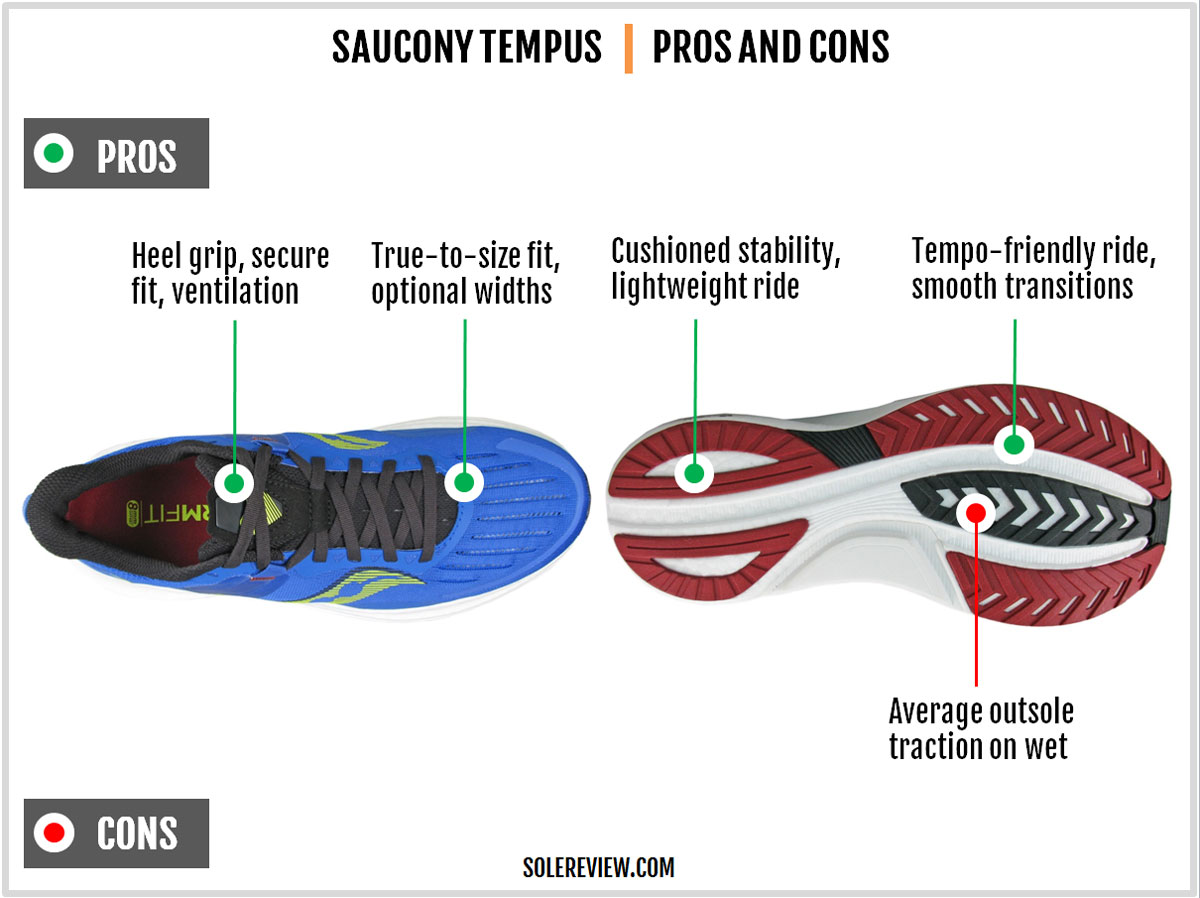
The Saucony Tempus’s biggest strength is its mainstream appeal. That’s in stark contrast with traditional stability running shoes that may not find a lot of takers because of their niche design approach.
For example, even running shoes without medial posts – like the Brooks Adrenaline GTS 22 – have their critics because of the Guiderails. Similarily, many runners who prefer a neutral ride may stay away from the Kayano 28 or New Balance Vongo V5.
But the Tempus is different. The supportive EVA frame and cushioned PEBA midsole come together to create a versatile ride experience for most runners. It works equally well as an everyday trainer, tempo shoe, or long-distance trainer.
Its $160 price is slightly higher than it needs to be, given that the plate-equipped Endorphin Speed 2 retails for the same price. The outsole grip isn’t great on wet roads either.
COMPARISON: THE SAUCONY TEMPUS VERSUS SAUCONY GUIDE 15
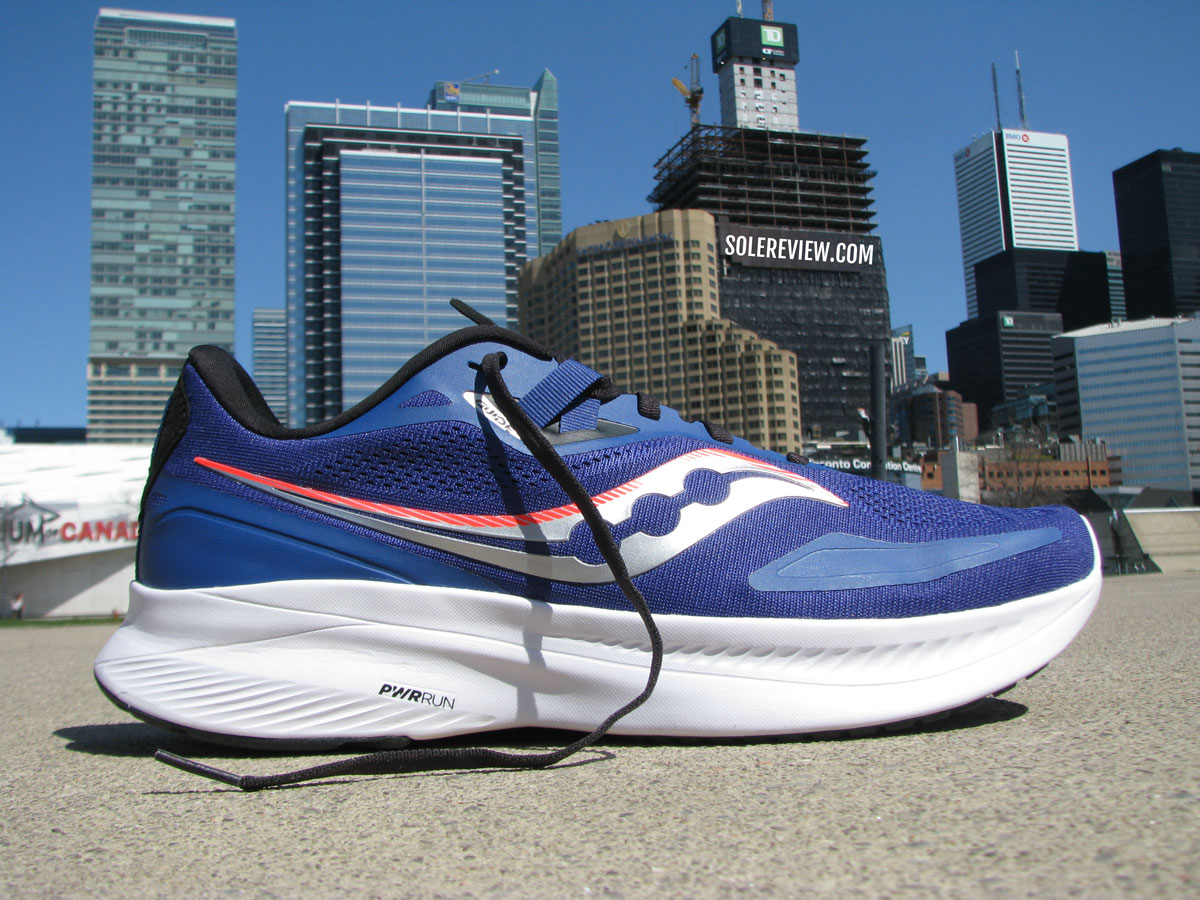
The Guide 15 is another stability shoe from Saucony, but its firm EVA midsole makes it a completely different shoe than the Tempus.
On paper, both the Saucony Guide 15 and Tempus are ‘stability’ running shoes. However, that classification is the only thing that the two shoes have in common.
The less expensive Guide 15 has a significantly firmer ride than the Tempus due to its EVA foam midsole.
From a performance point of view, the Guide 15 is about the traditional running experience. The Tempus, is, of course, more fun to run in. The PEBA midsole is an ounce lighter, and has a peppy feel that’s missing on the Guide.
Ride stability is where the Guide 15 outperforms the Tempus; the firmer midsole offers a greater level of support by resisting compression.
The Tempus breathes better due to the vented mesh and tiny inner gusset. While the Guide 15 isn’t a hot shoe per se, its upper has a full inner sleeve.
On the other hand, the Guide 15’s upper has a plusher feel because of more padding in the heel and tongue.
SHOES SIMILAR TO THE SAUCONY TEMPUS
The Saucony Tempus may be inspired by the adidas Sequence, but there’s nothing like it at the time of writing this review.
The Brooks Glycerin GTS 20 and Levitate GTS 15 use raised midsole walls called ‘Guiderails’ as stability-enhancing features. But both those shoes are closer to a traditional trainer, as they outweigh the Tempus by over 2 ounces.
For a cushioned yet neutral-support ride experience, we recommend the Asics Kayano Lite 2. Unlike the standard Kayano 28, the Lite variant doesn’t have a firmer midsole wedge. Instead, it relies on a wide and cushioned midsole to deliver its promised ride stability.
Finally, the Endorphin Shift 2 looks vaguely similar to the Tempus from the outside. That being said, its firm EVA foam midsole makes it a closer match with the Guide 15 instead of the Tempus. The Endorphin Shift V2 has the same sole as the Shift V1 – a shoe that we reviewed a while back.
Do you own this shoe? Improve this review by sharing your insights – submit a review here.
